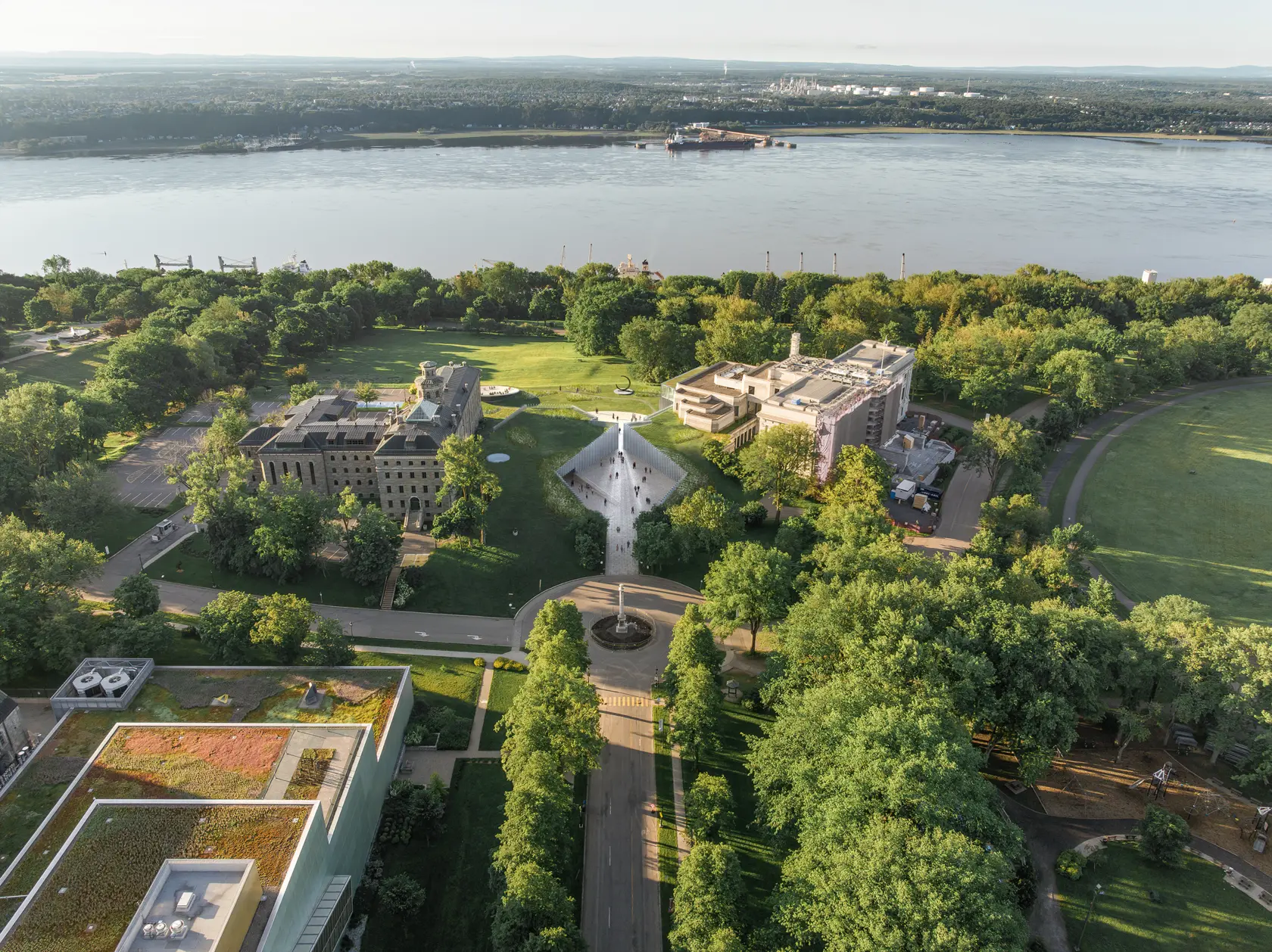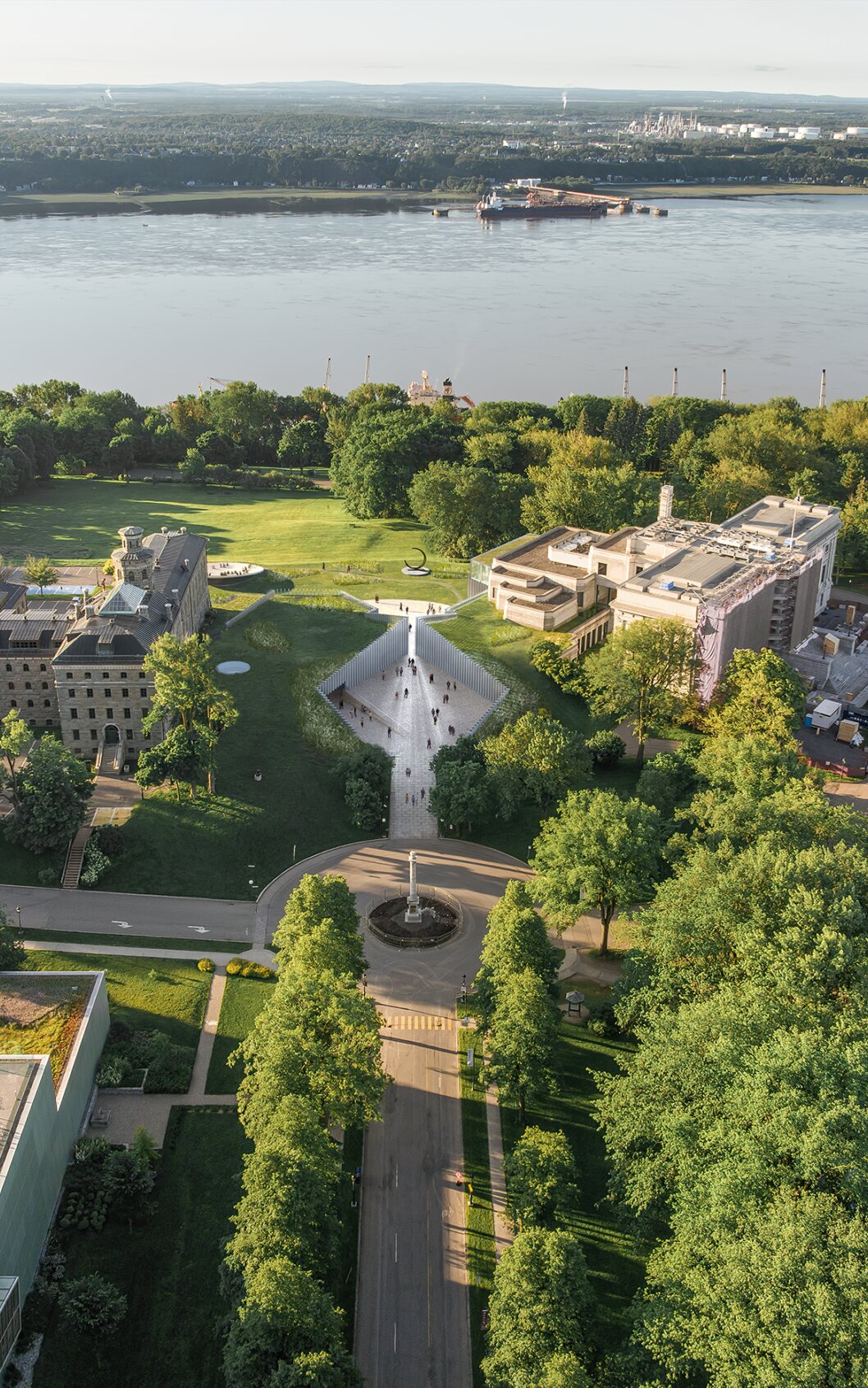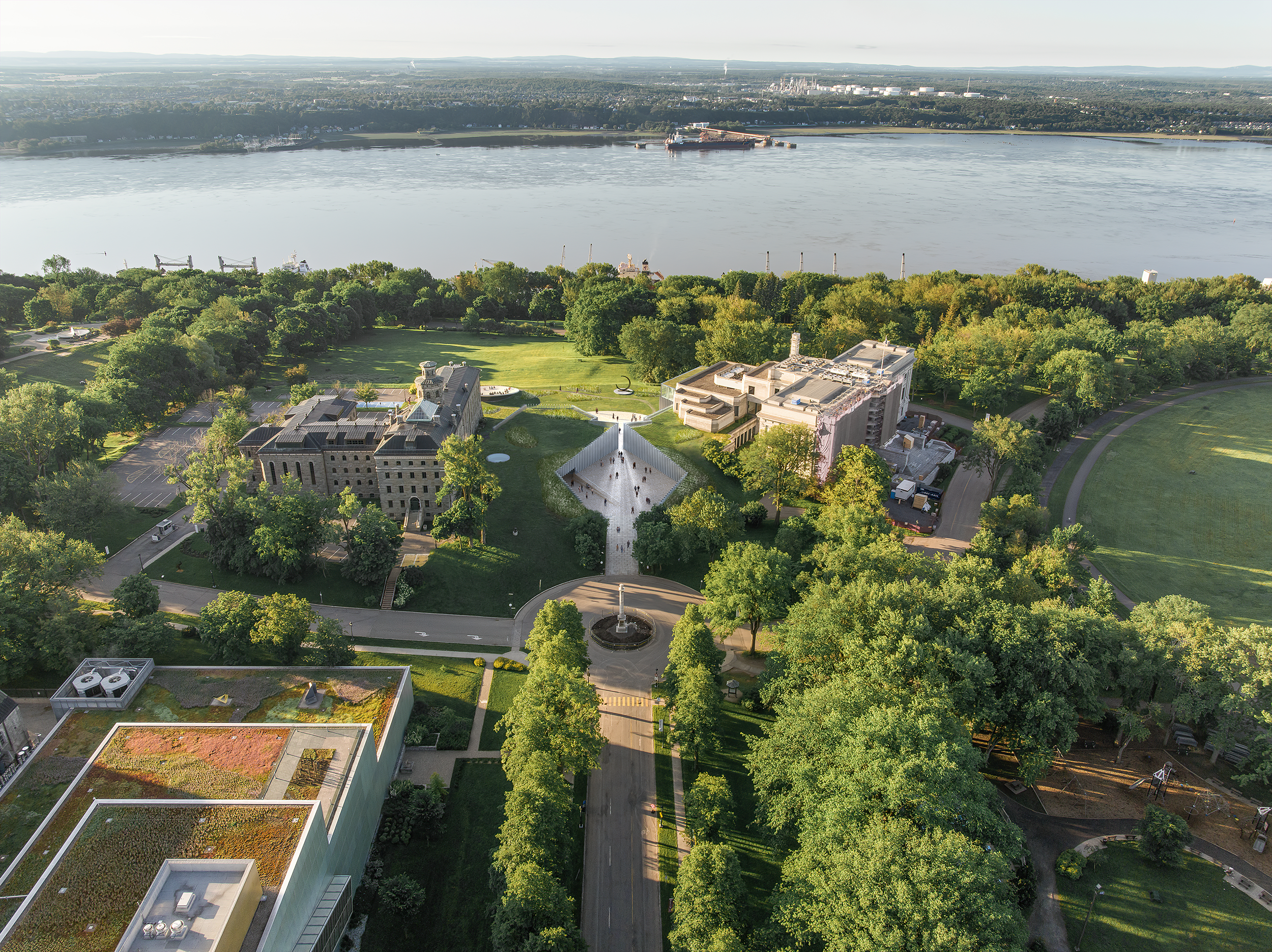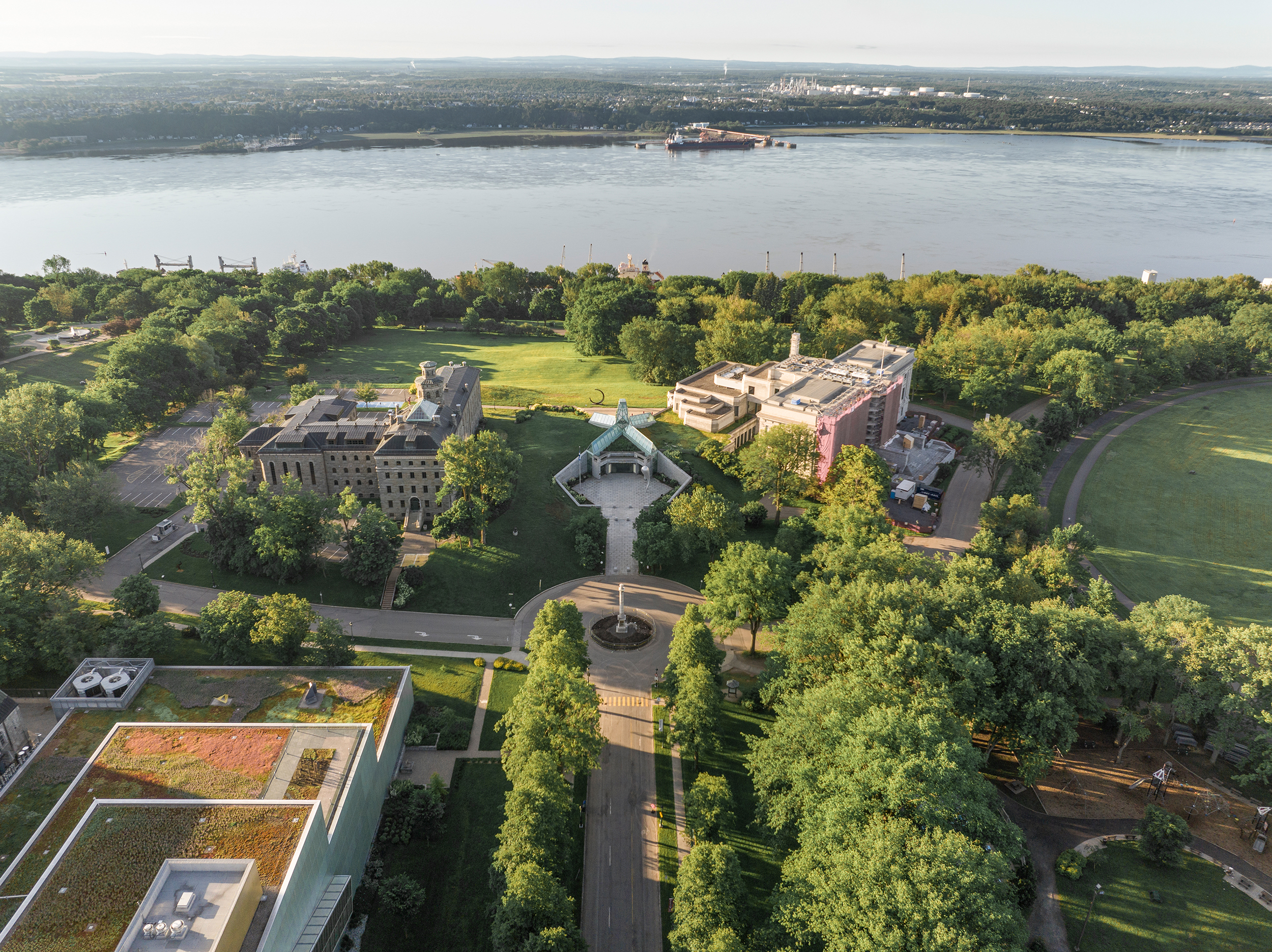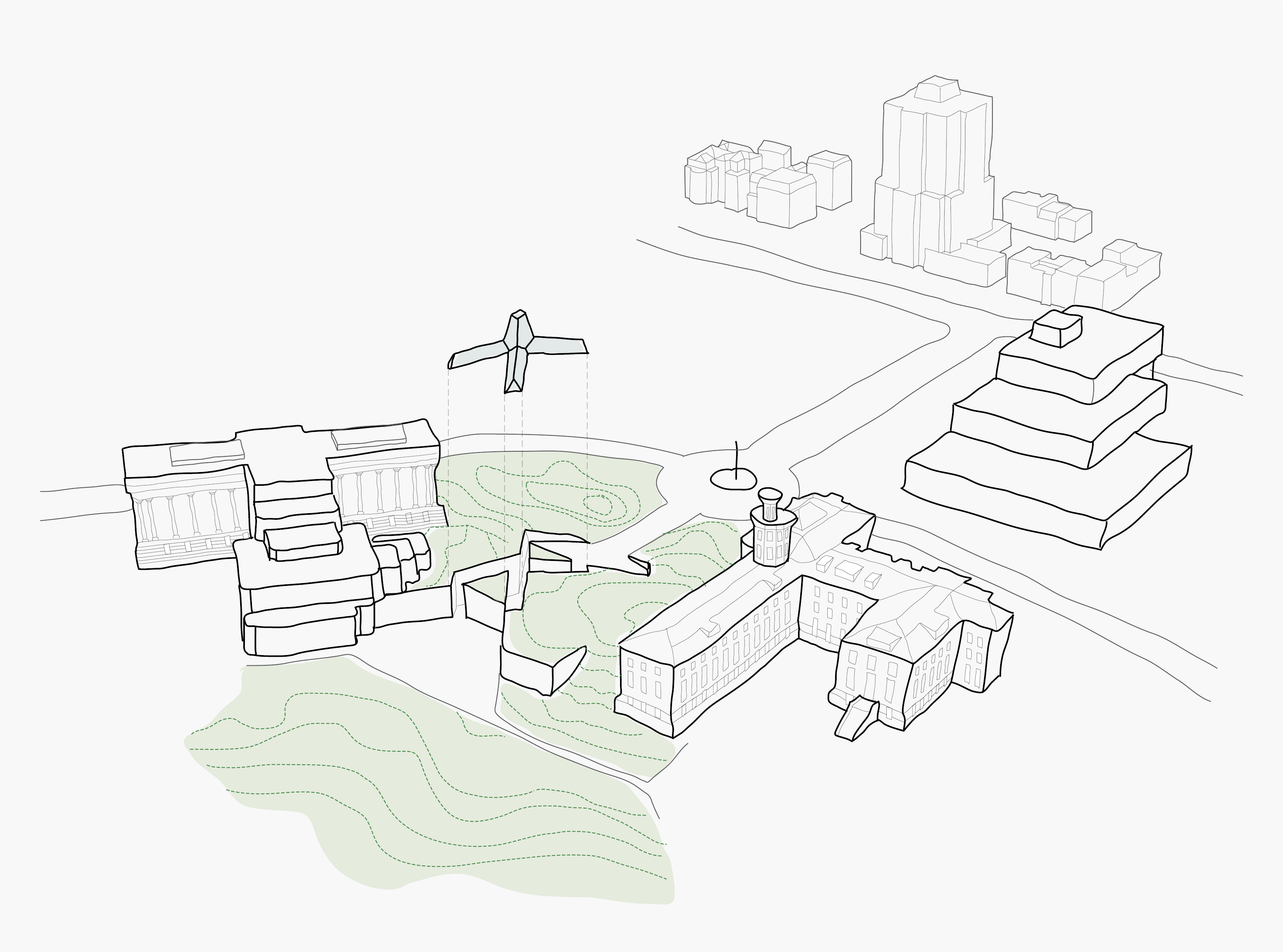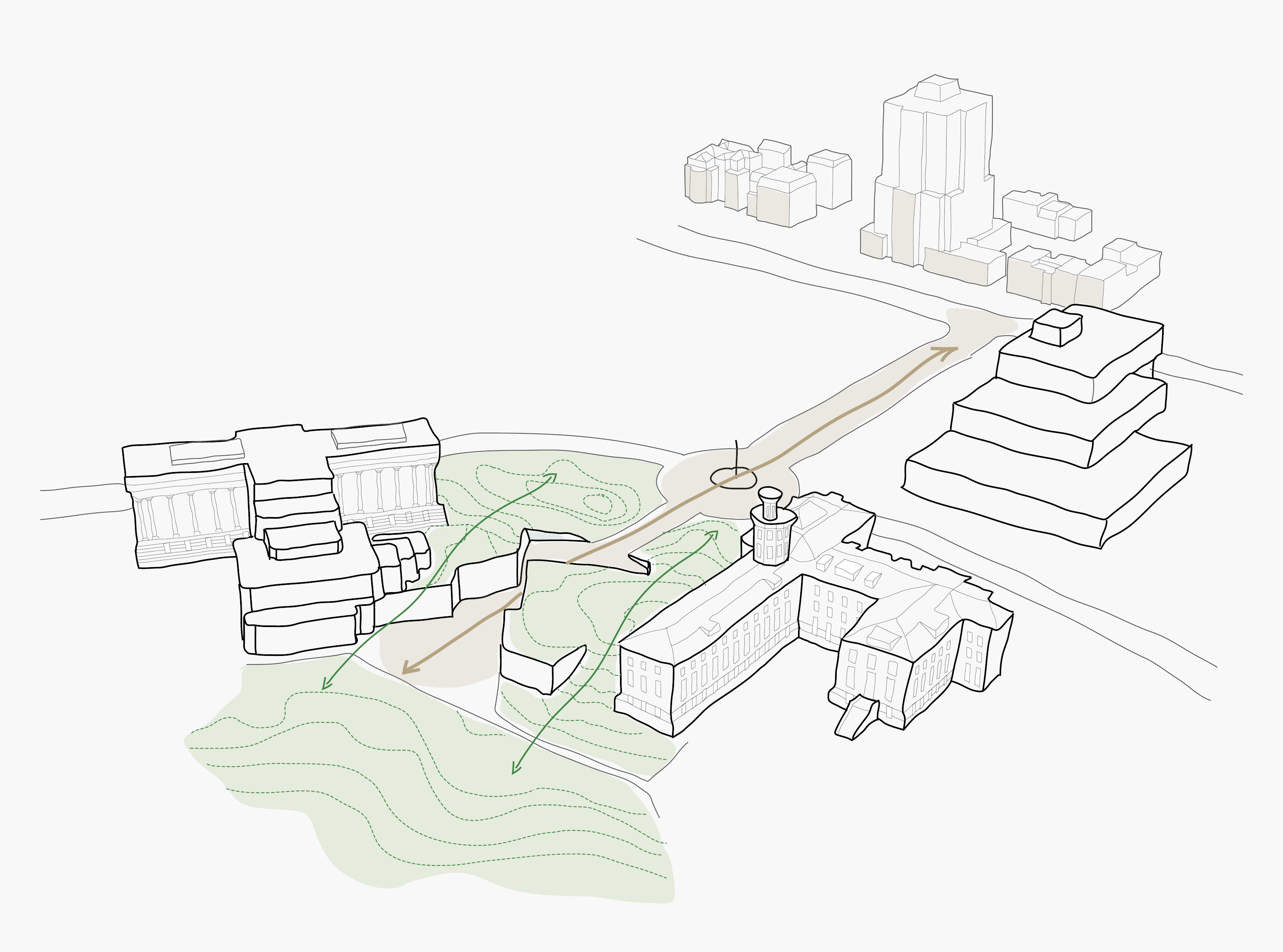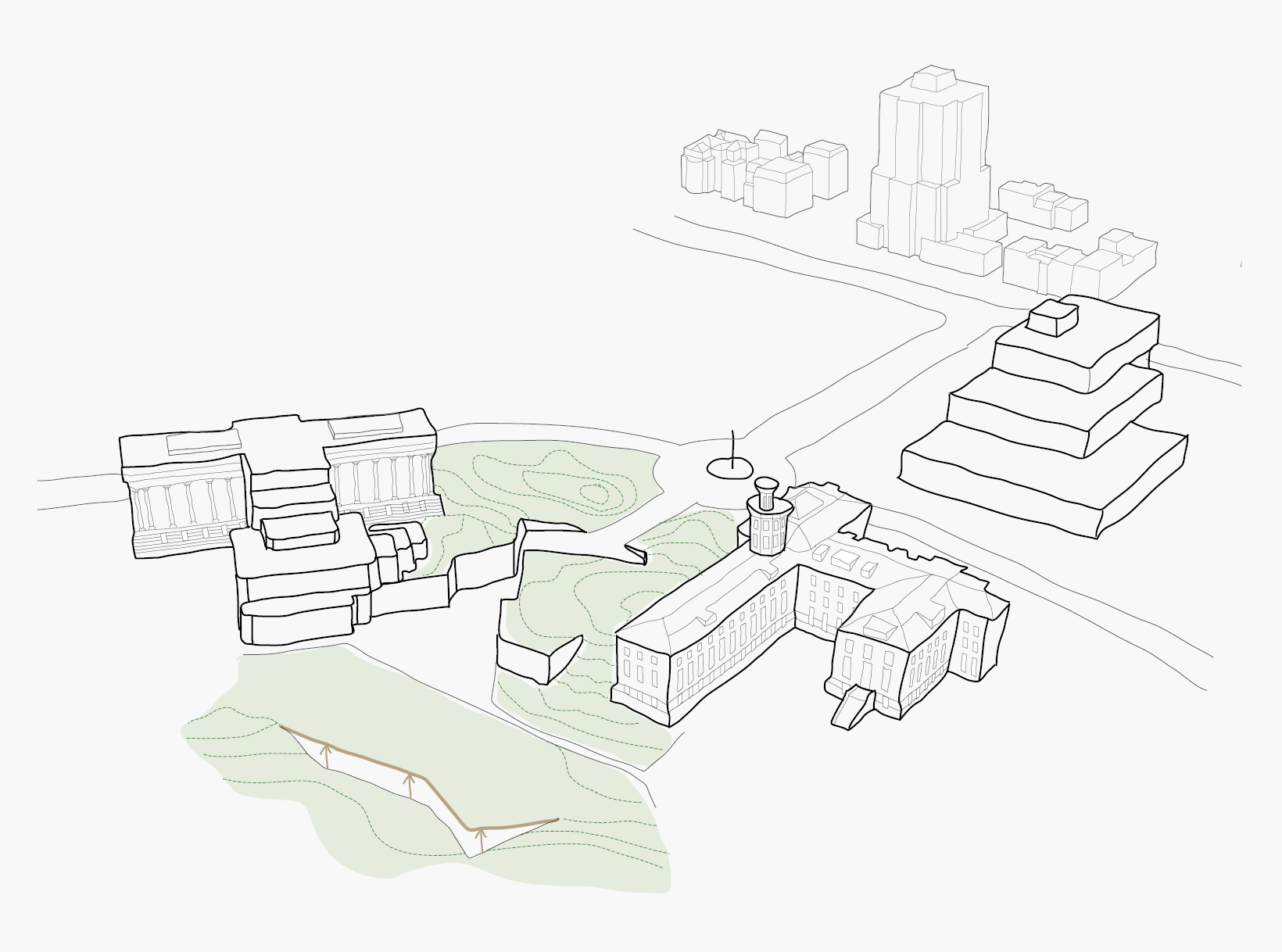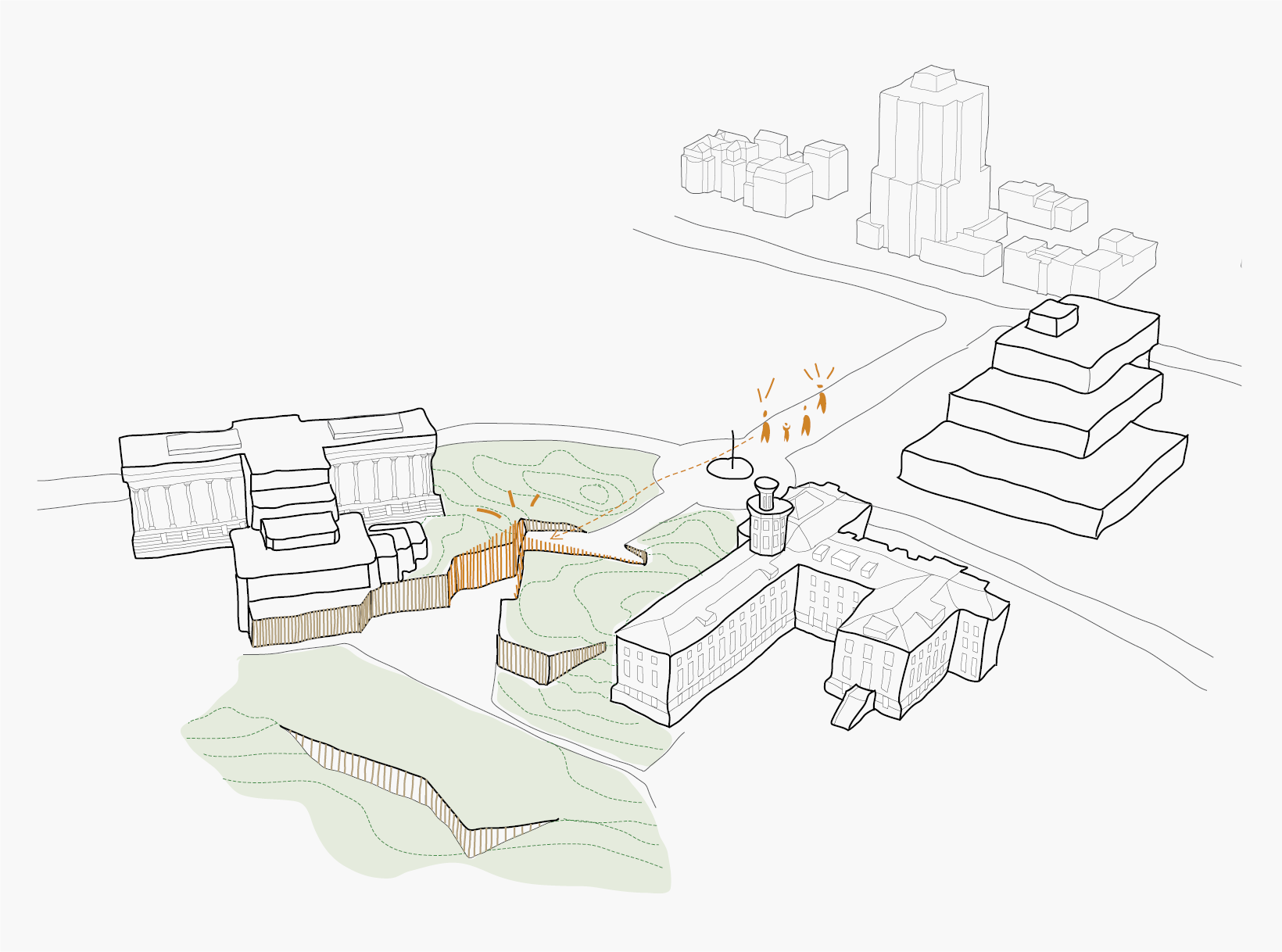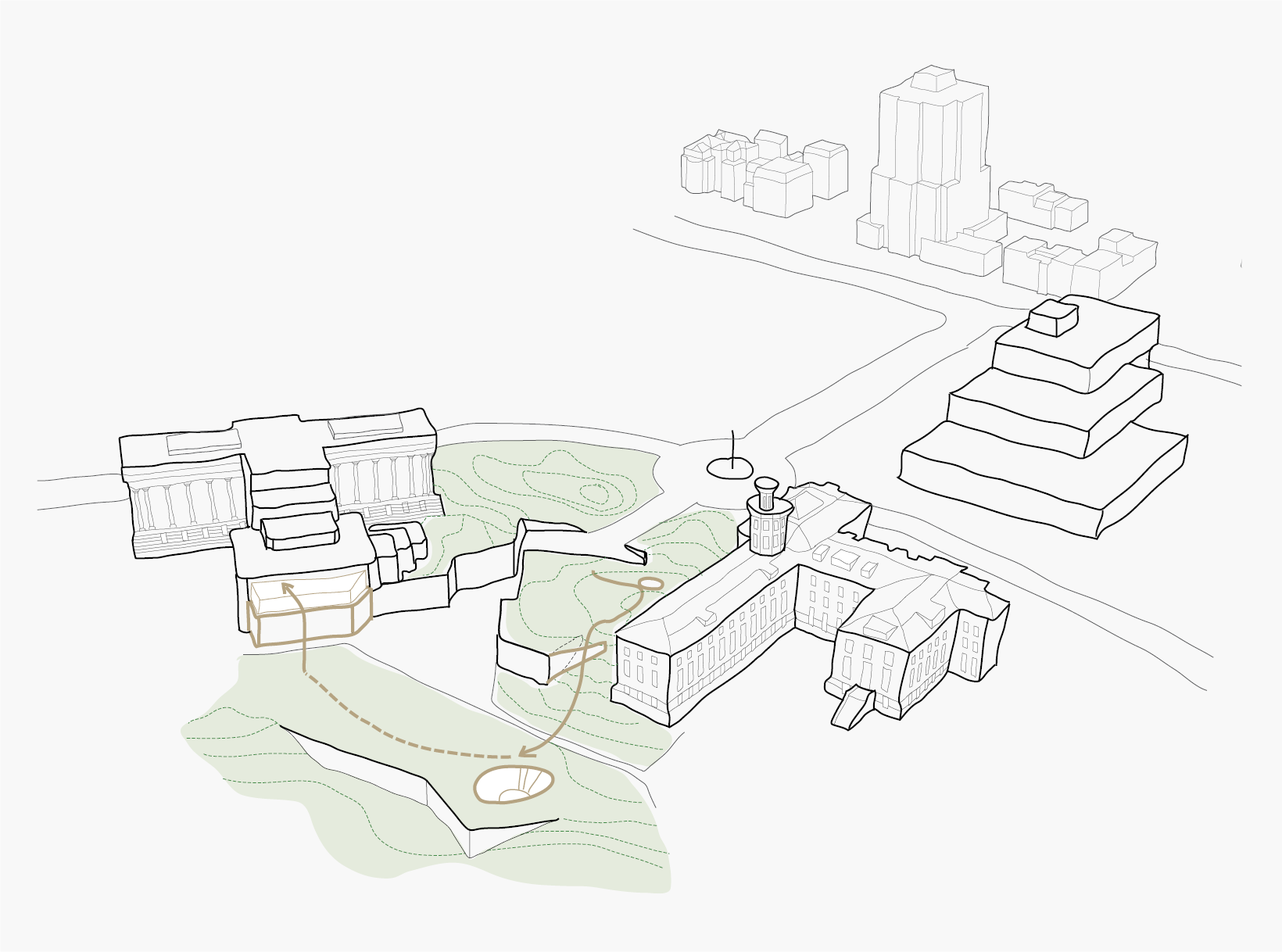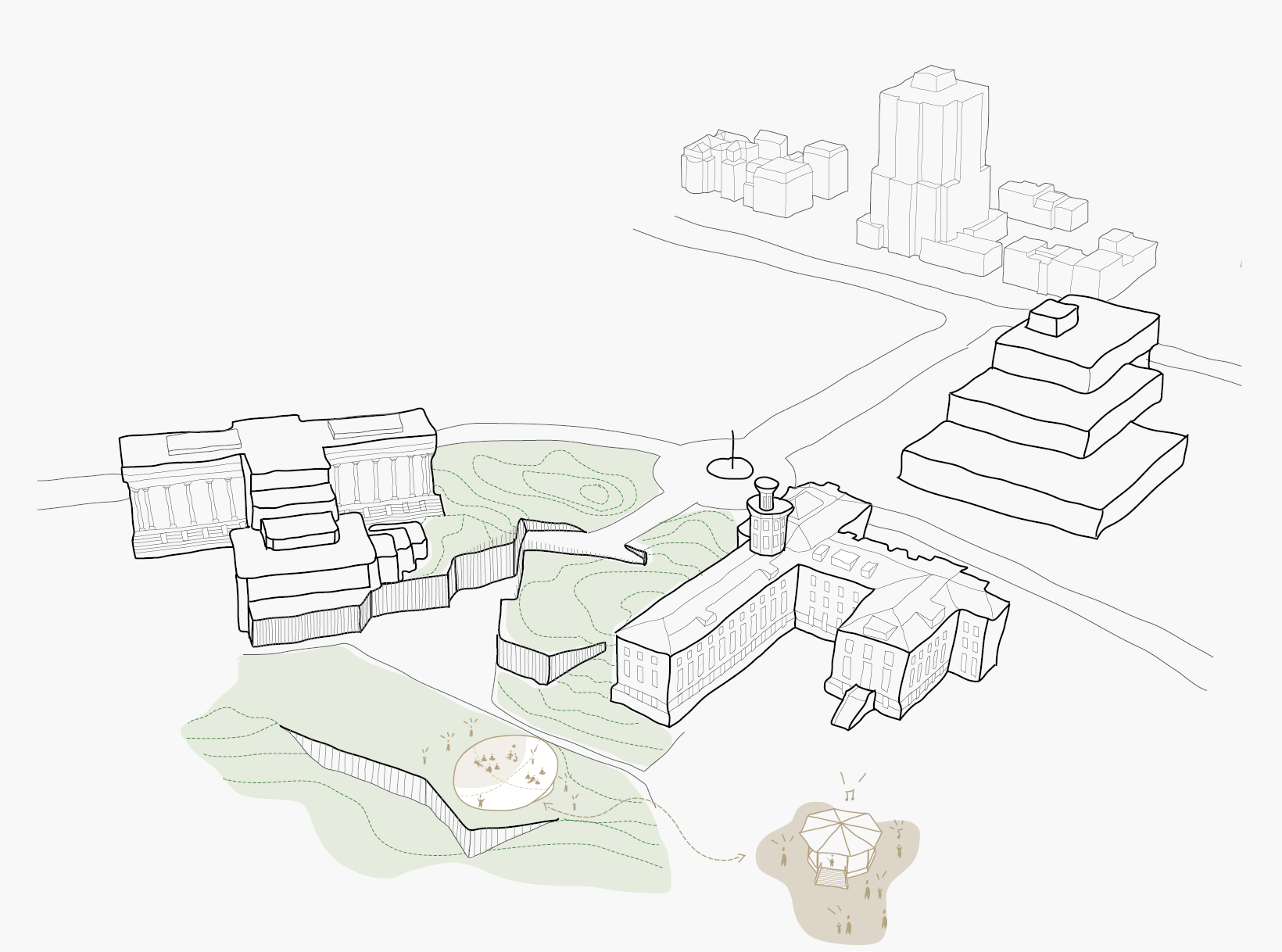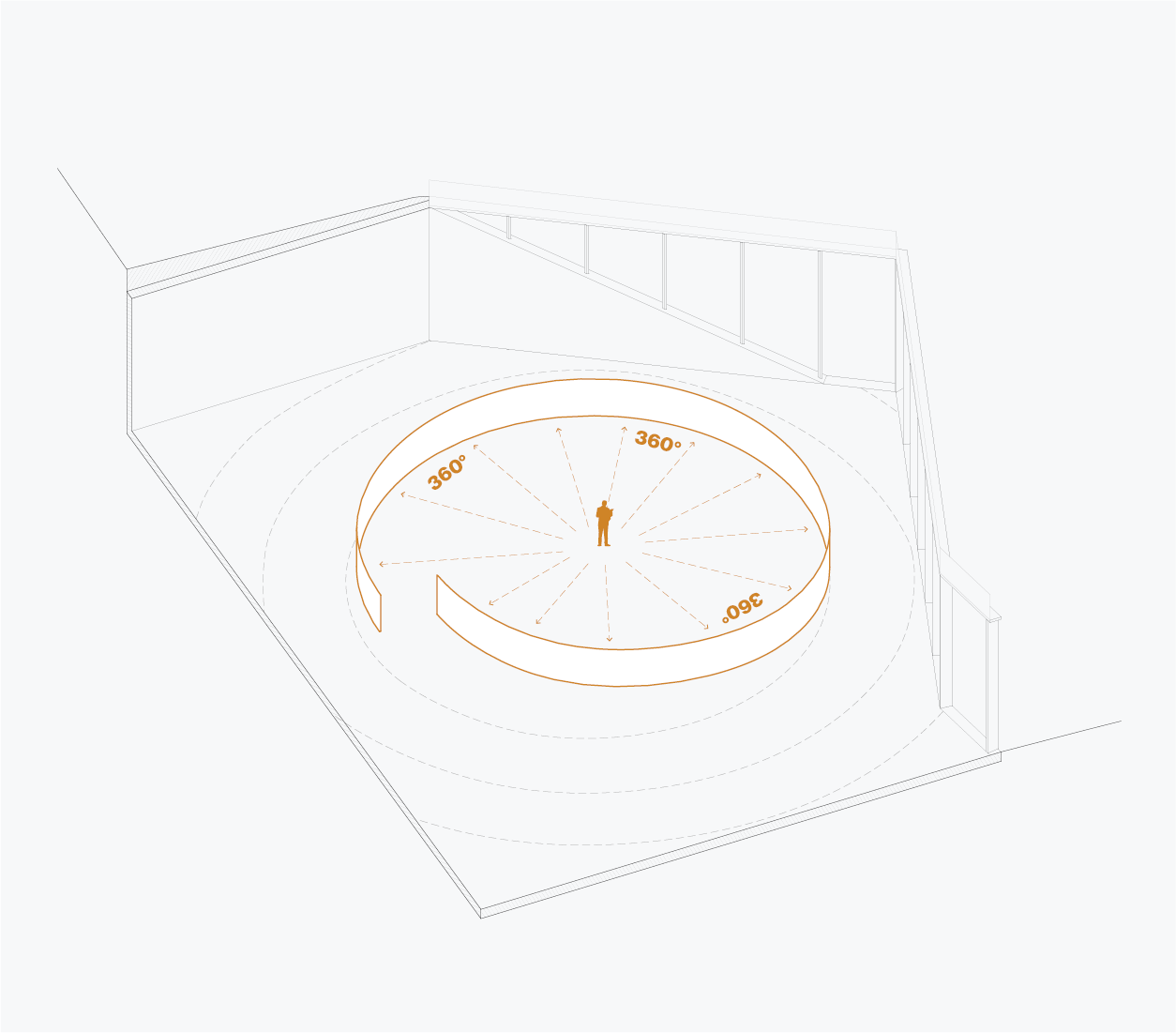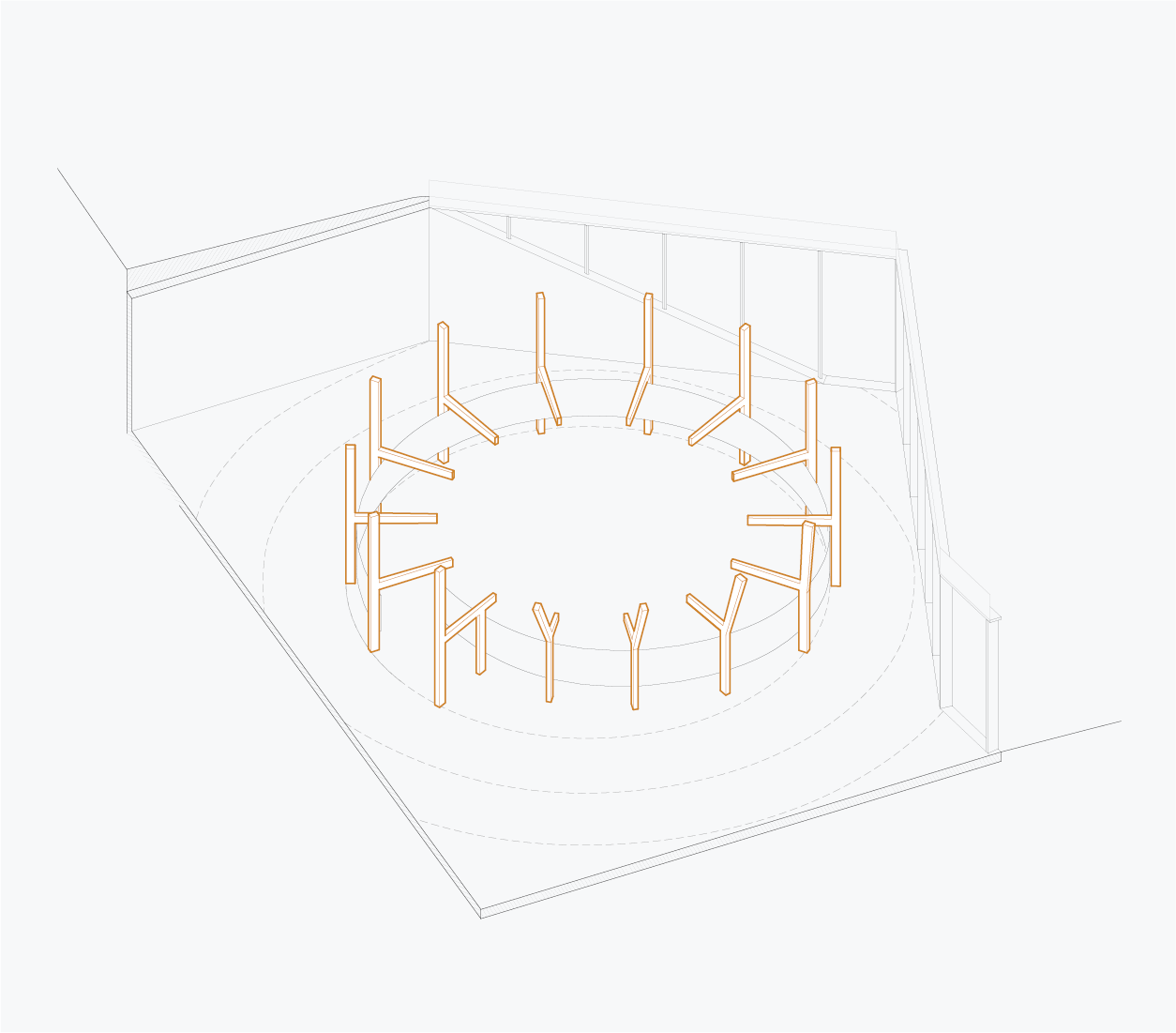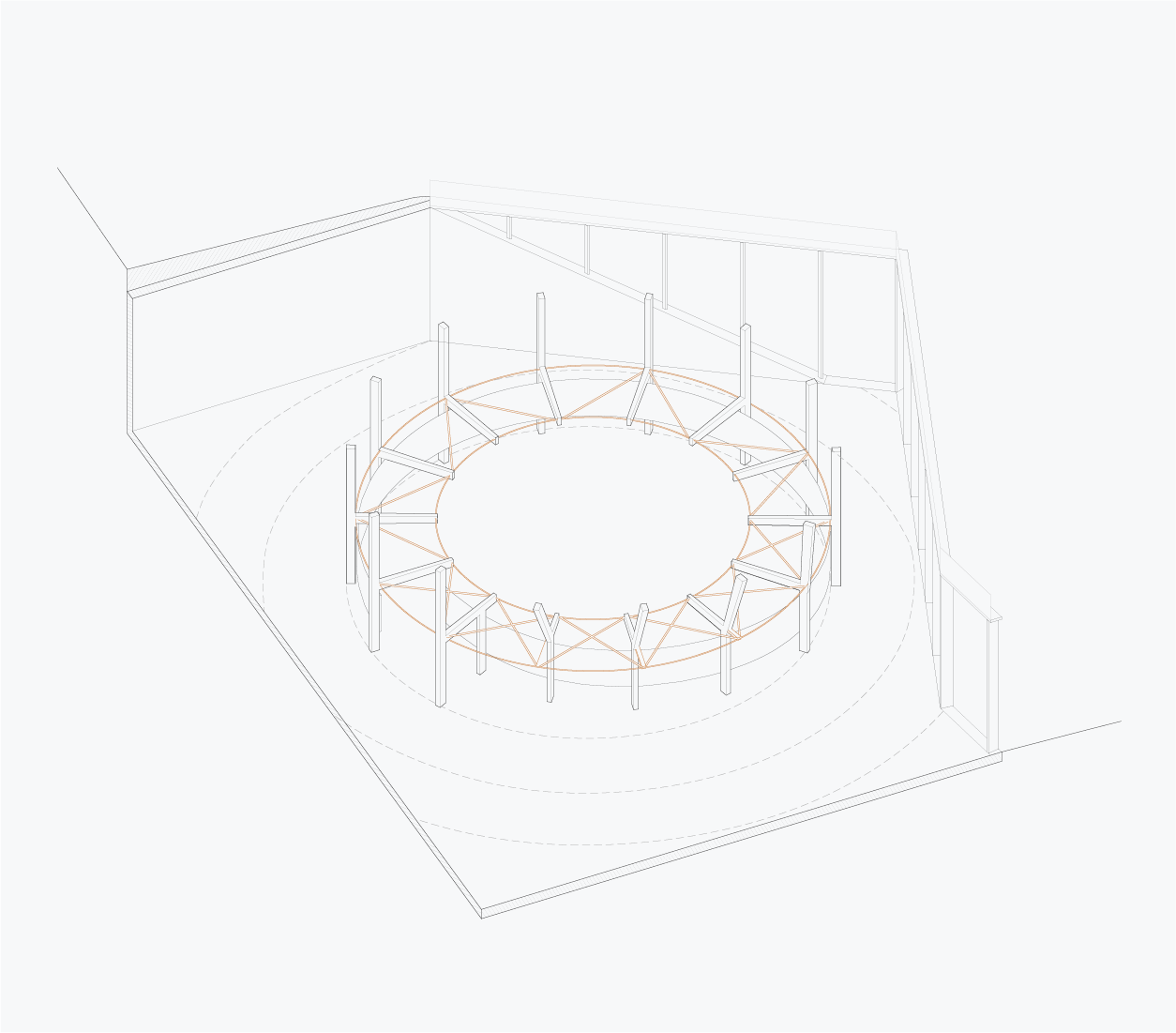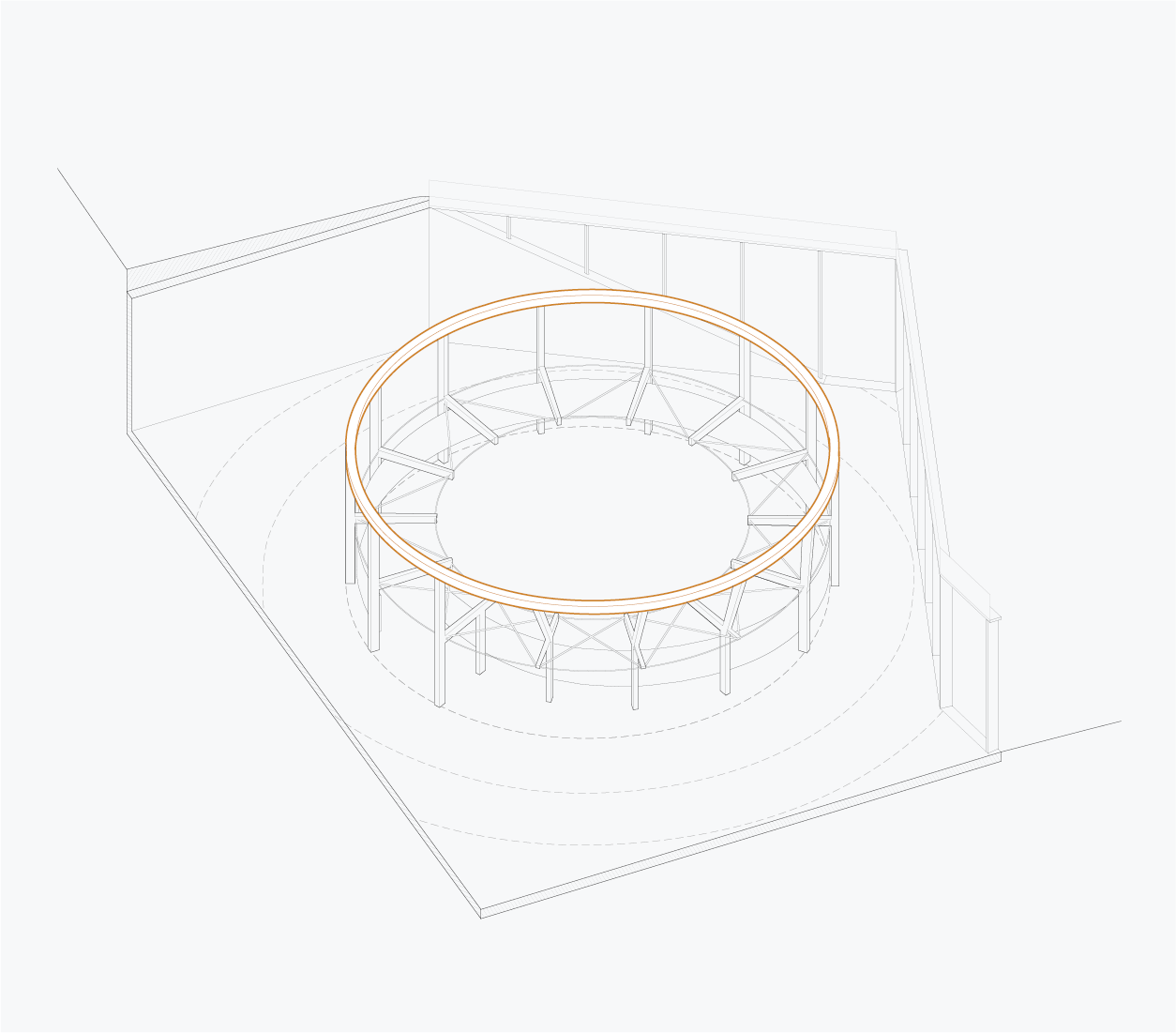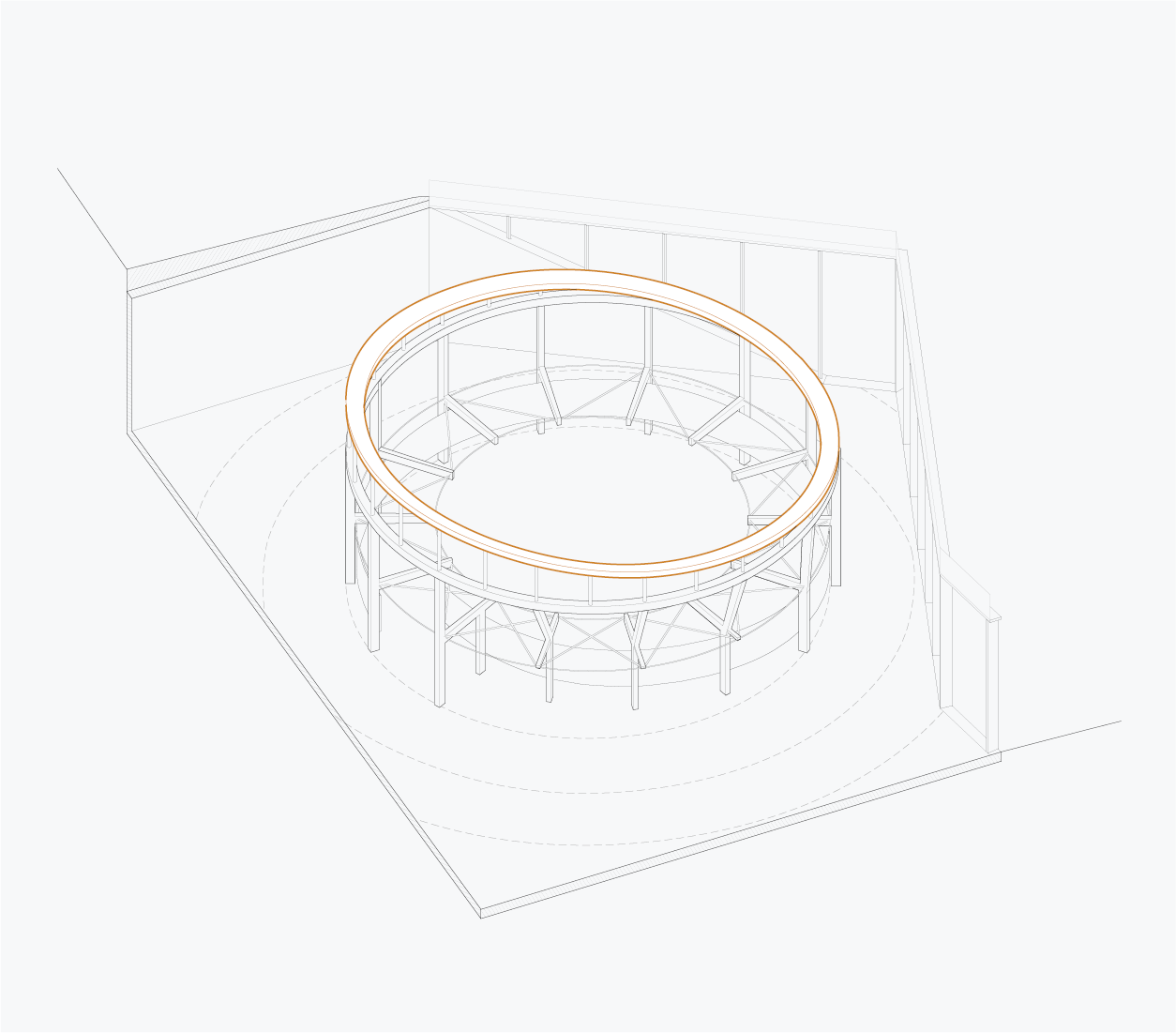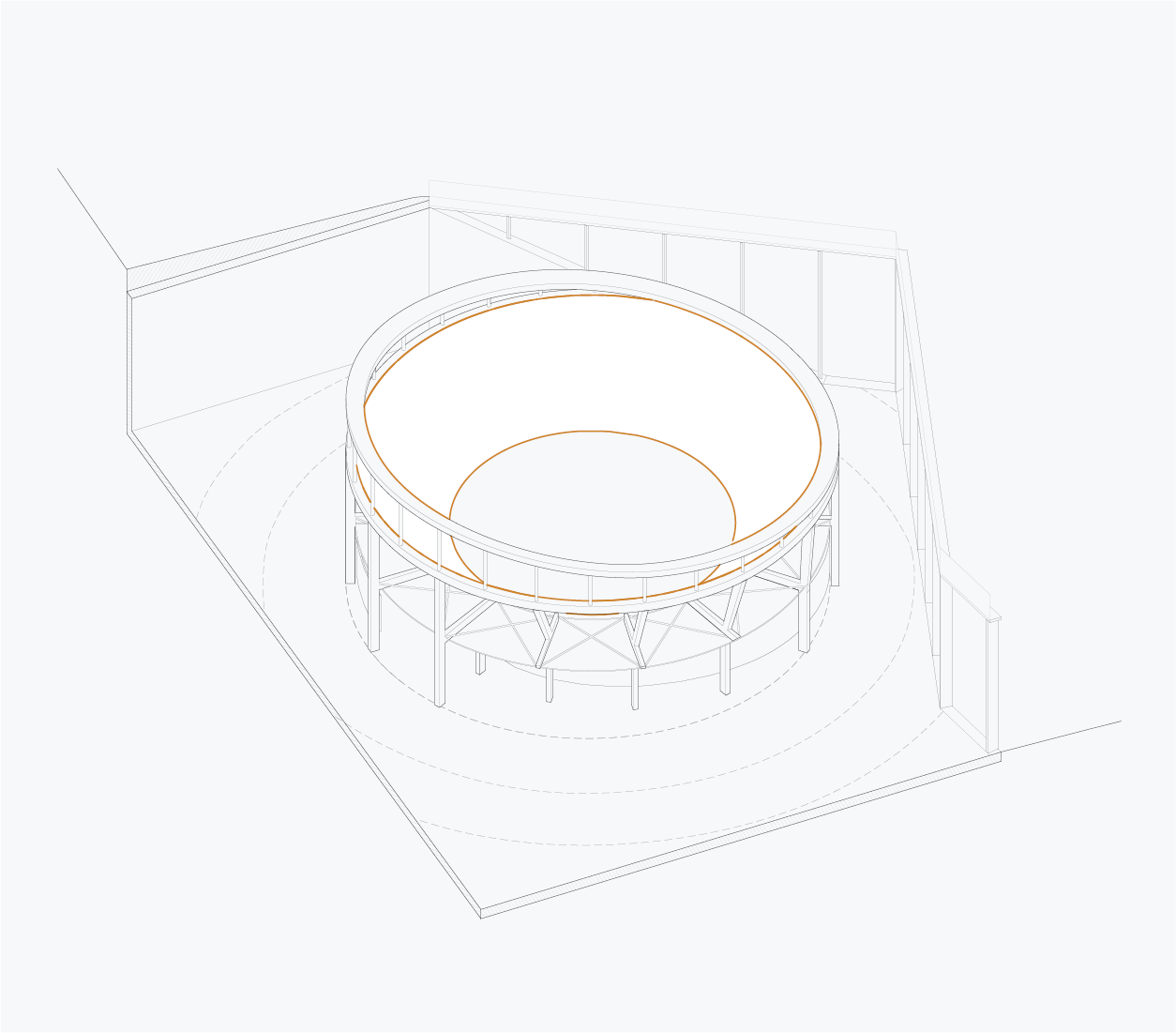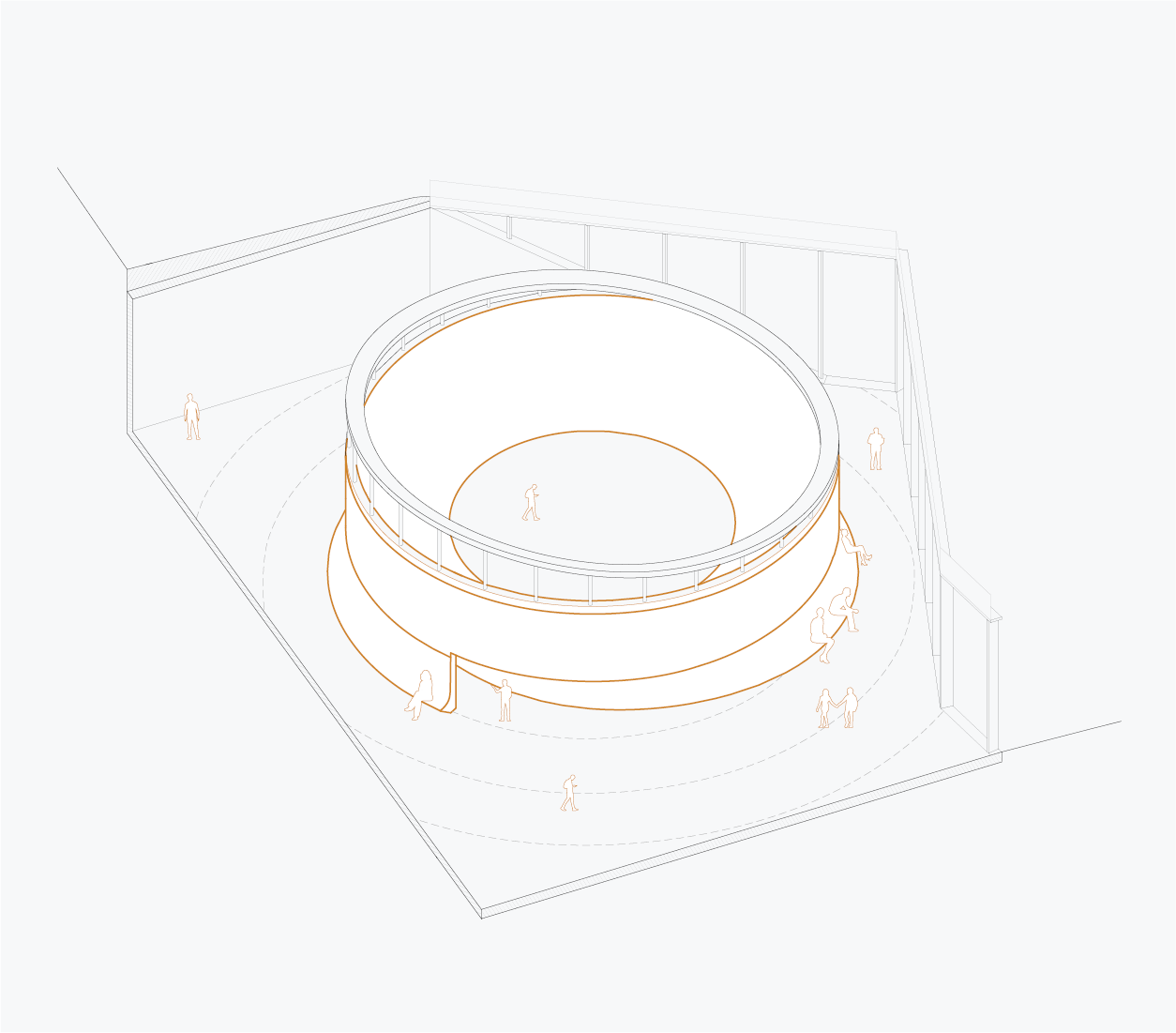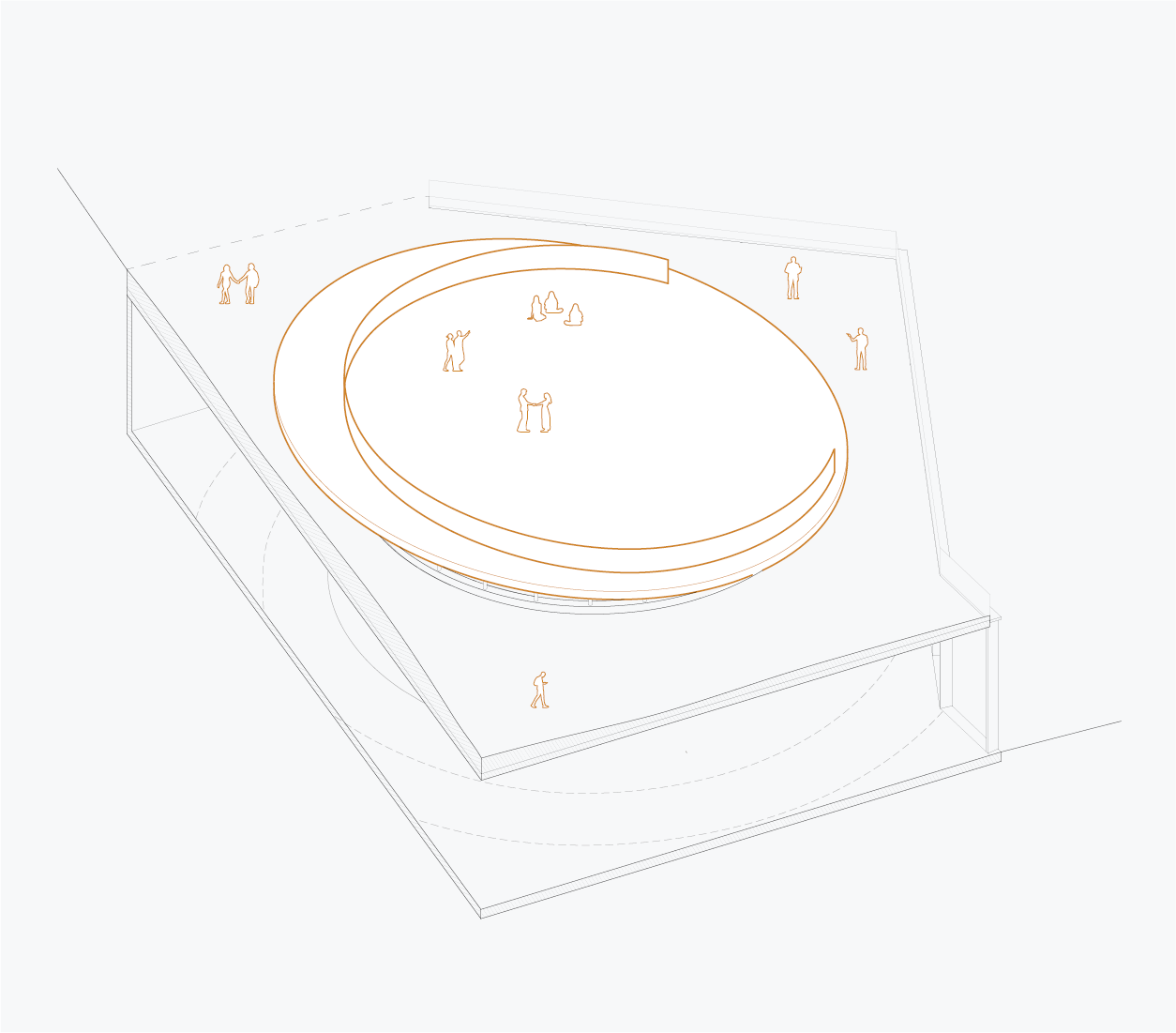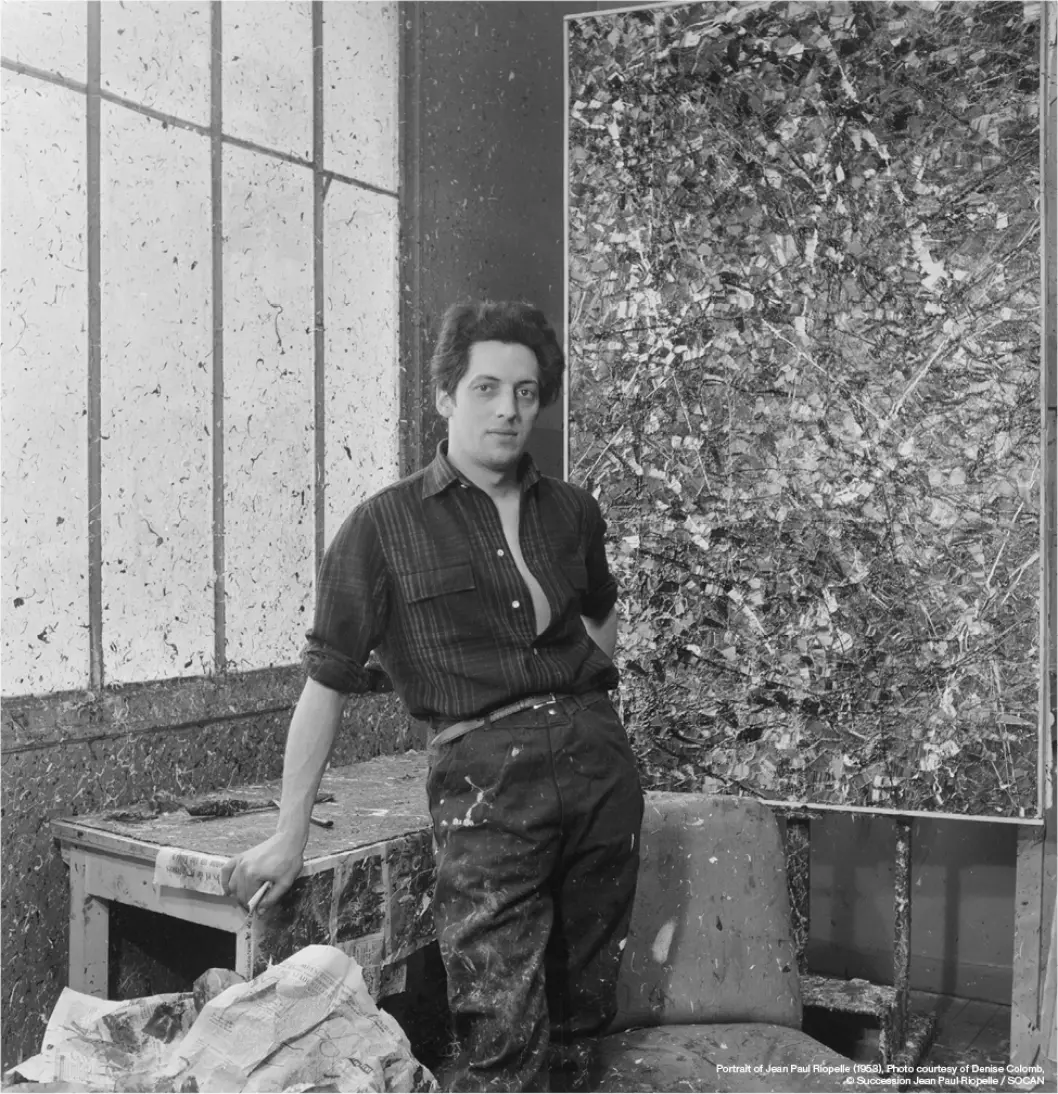
Jean Paul Riopelle is one of Canada’s most celebrated artists of the 20th century. Known for his painting style and approach, Riopelle worked in many artistic styles. His singular view of landscape and nature, and especially this call to ‘go towards nature’ was a key aspect of his approach to art.
The MNBAQ campus is comprised of an ensemble of pavilions from different time periods over the past 150 years. It includes the Charles-Ballairgé pavilion from 1867, the Gérard-Morisset pavilion from 1933, the Central pavilion from 1991, and the recent Pierre-Lassonde pavilion from 2016. Home ground to significant historic battles, the Plains of Abraham is to Québec City what Central Park is to New York: a city park of outstanding value, the green lungs of the city.
Our proposal is conceived of as both a landscape and a building. It aims at reconnecting the city to the park: above, below, and through the MNBAQ, making the museum, the site, and the park more porous, open and accessible. This new outdoor space becomes a generous public plaza drawing visitors inward with its land art-like design.
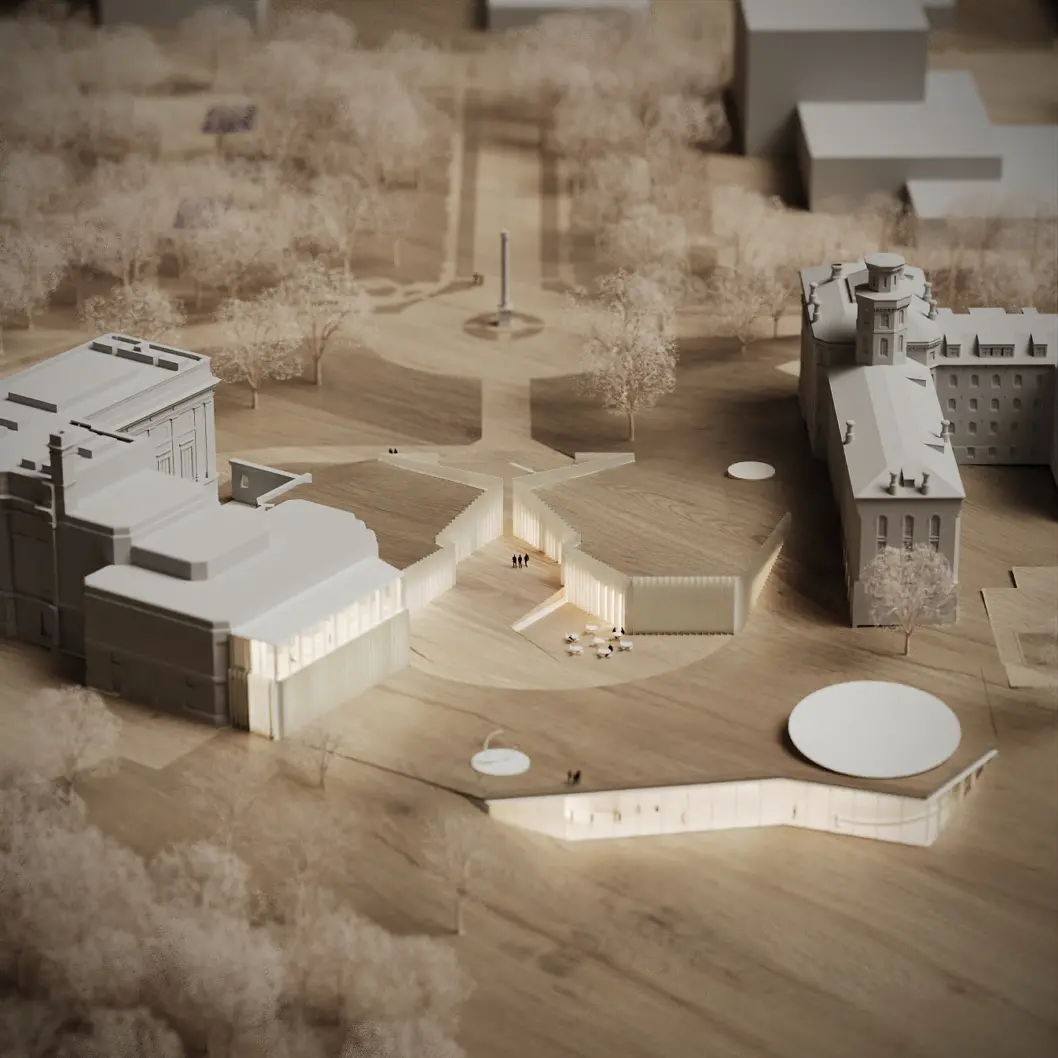
The important historical axis on the Wolfe-Montcalm Avenue is no longer a barrier, it is an opening, an escape towards nature. It becomes a generous public space in the heart of the Plains of Abraham.
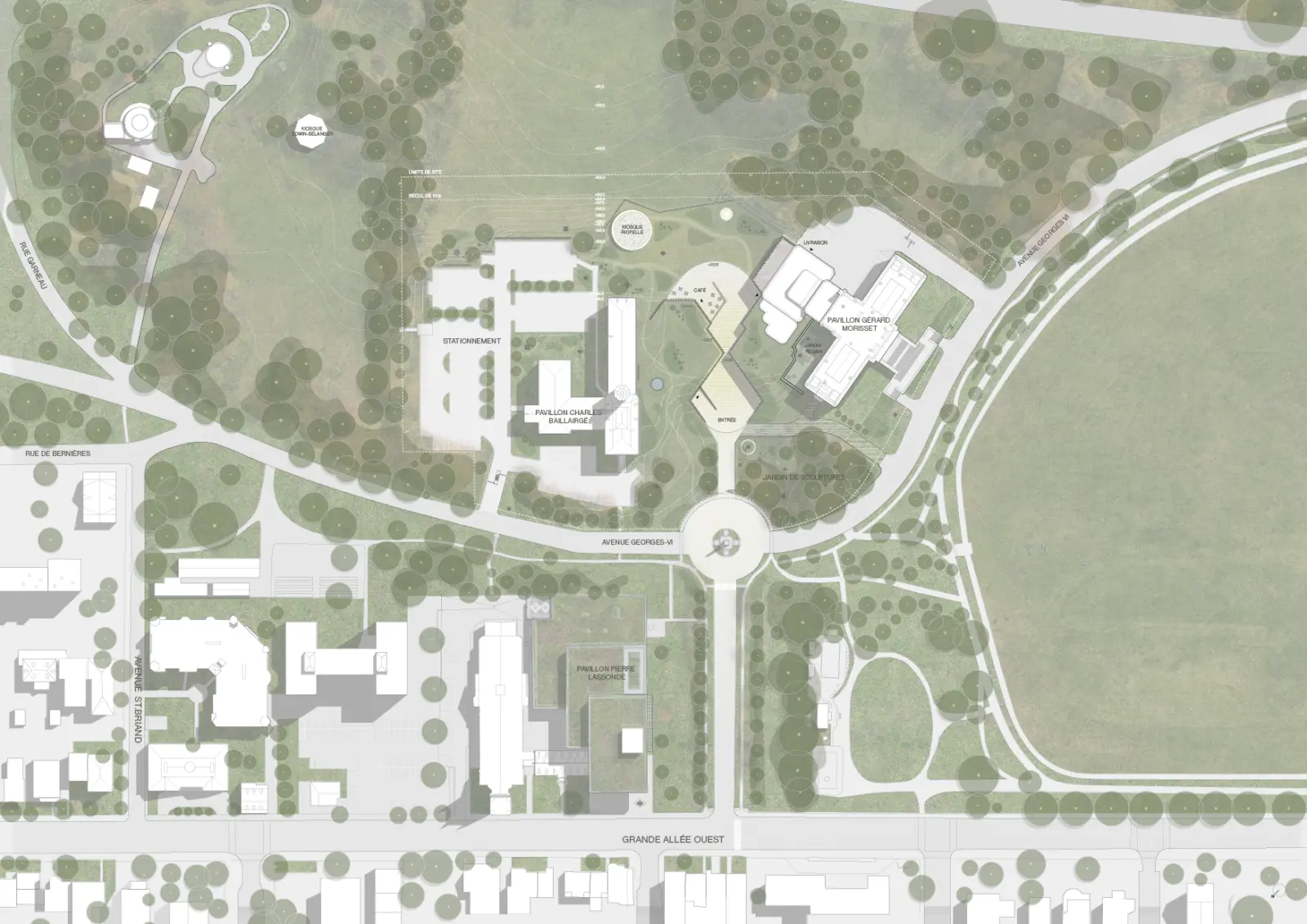
Site plan
nature, space,
time, and experience
To mark the presence of the new Espace Riopelle, a unifying, sculptural approach has been used on all ground floor facades. These facades are transparent and covered with vertical profiles - cast aluminum lamellas - that dress the facade in a coherent expression. From afar, the vertical elements form a sculptural triangular element - a new powerful signal for the MNBAQ, the vision of a living and inclusive museum.
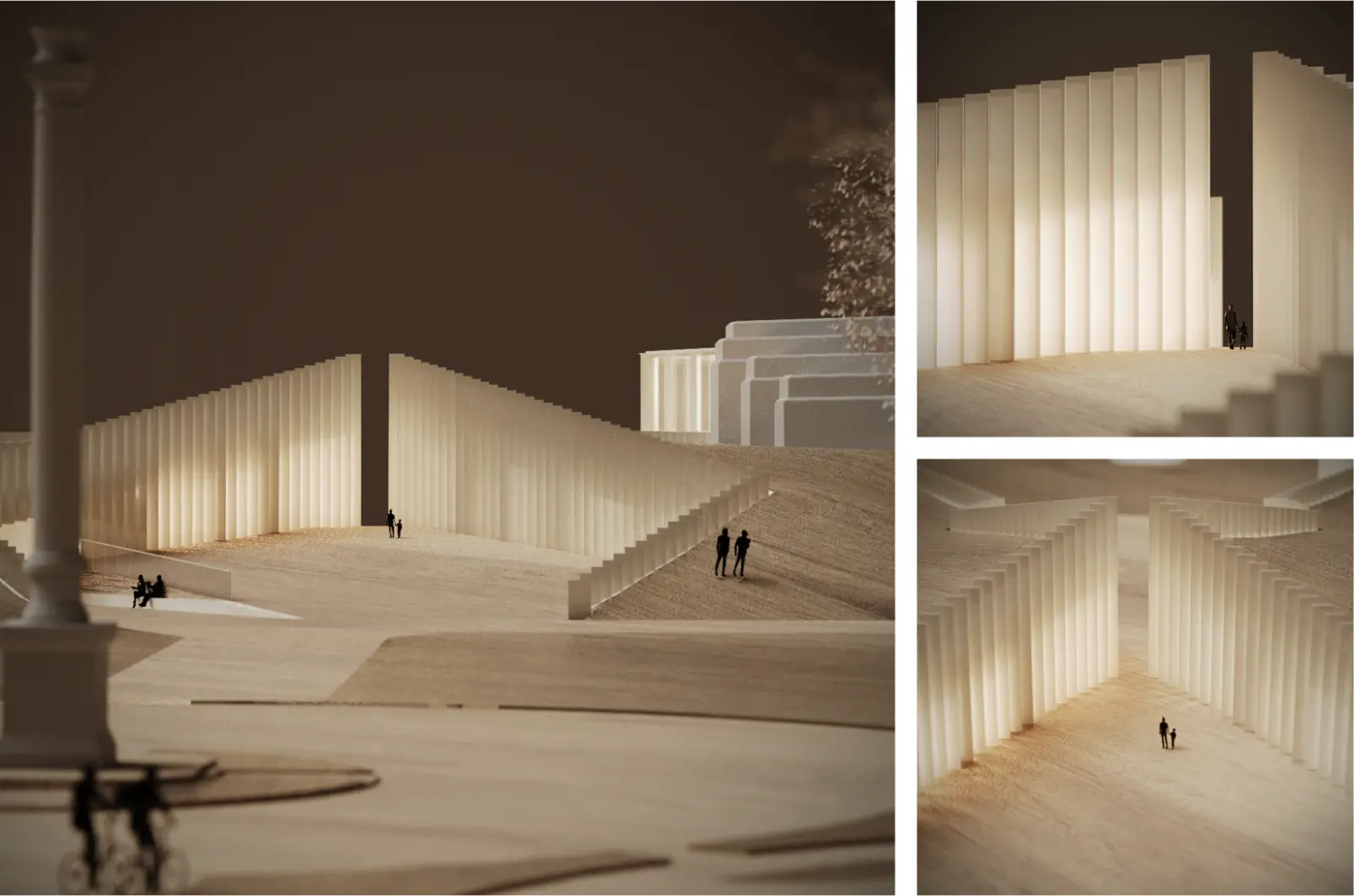
Passing through this new public space, visitors are set on a journey of discovery. The lamellas, which seem closed upon approach, open up and form a progressive and unexpected discovery of the museum, one where landscape transitions into architecture. Step by step, the perception not only of this space, but of the entire museum changes. It draws the visitor in to a new relationship with nature, built form, space, light and time. It celebrates the logic of the place in its simplicity.
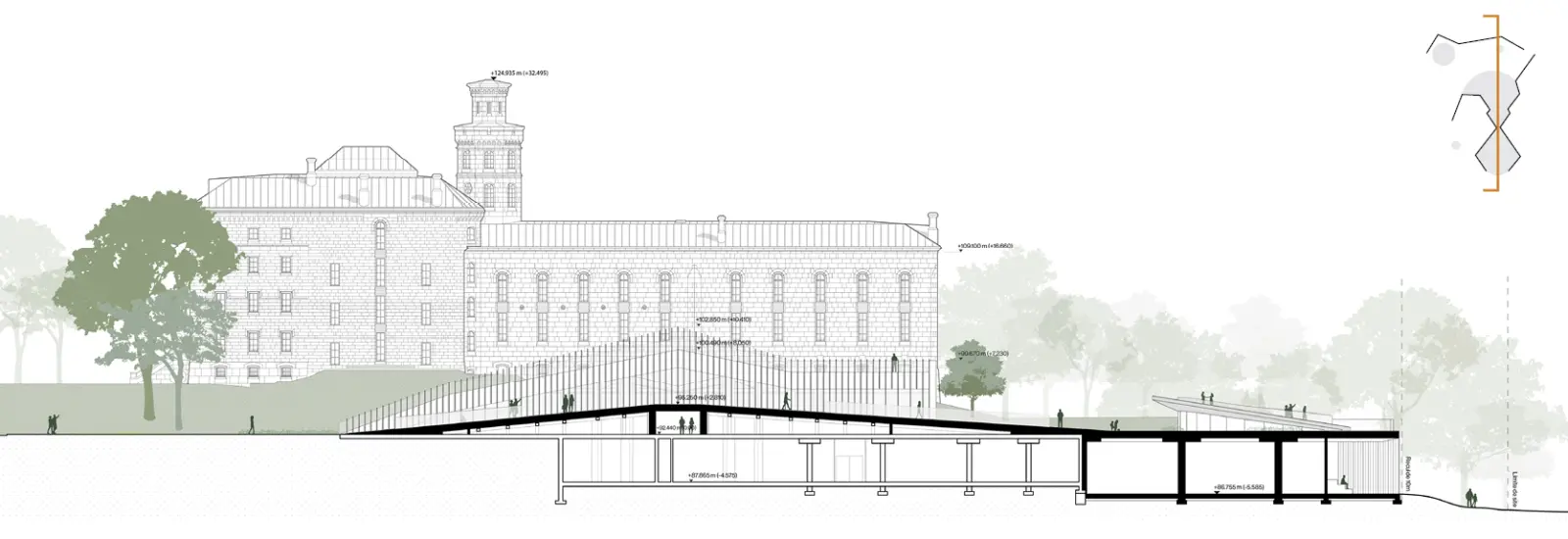
The interior continuity of the museum remains intact due to the incline of this new public space on the ground floor.
Through the subtle incline of the public space, the interior continuity of the Central pavilion is maintained. This ensures the full integration of the museum circuit below, which connects flows between the new Carrefour Riopelle, the hall and the Morisset pavilion.
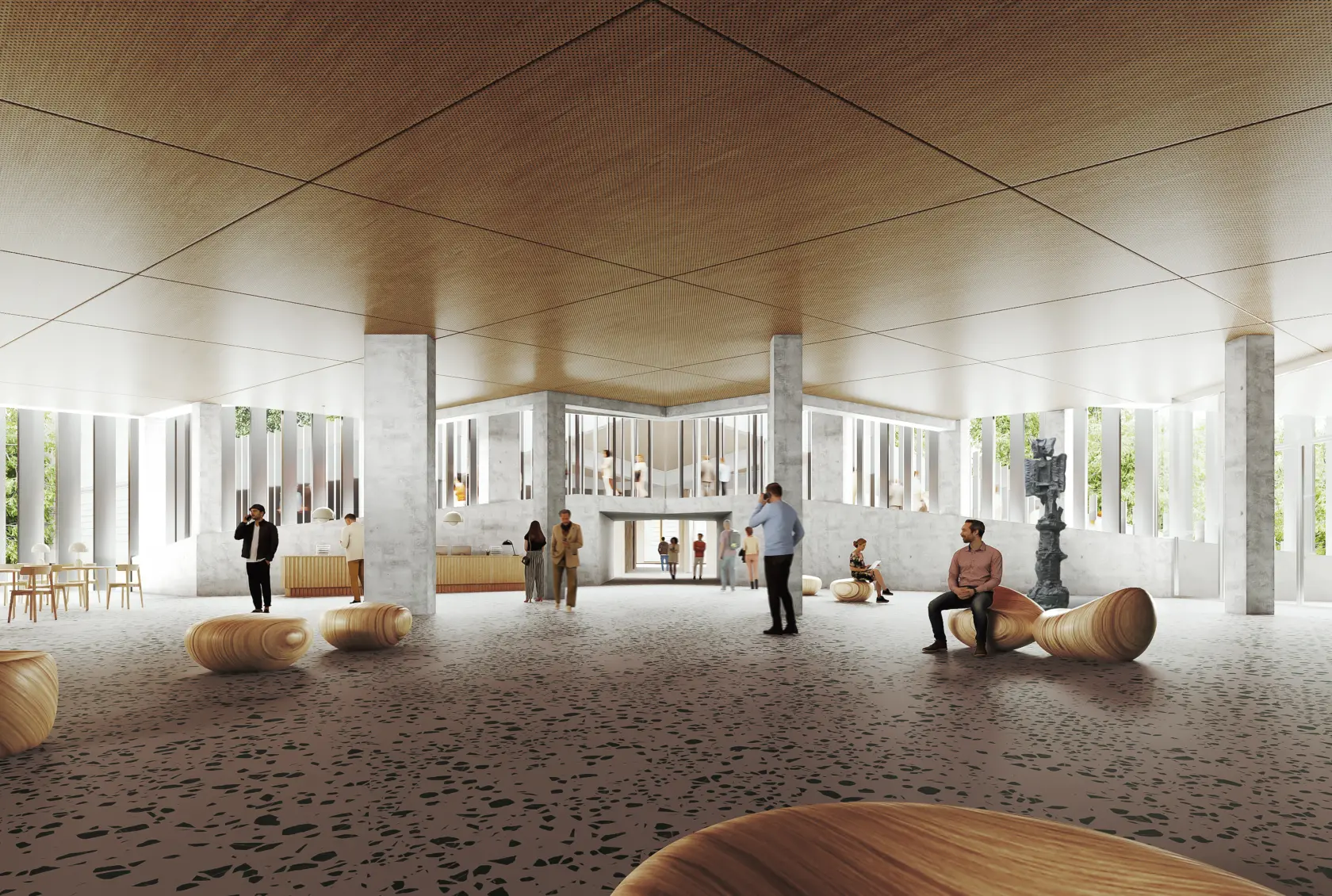
The Carrefour Riopelle becomes not only a meeting place within the museum but also a place of intersection, fluidity and visibility towards the public space.
Towards the park, the new exhibition halls have been placed in the landscape to create an immersive Riopelle experience in his most cherished of all elements, nature. By doing so, the legibility of the existing pavilions are respected and preserved. The new exhibition halls reveal themselves through a cut in the landscape, drawing the museum visitor closer to nature and to the Plains of Abraham.
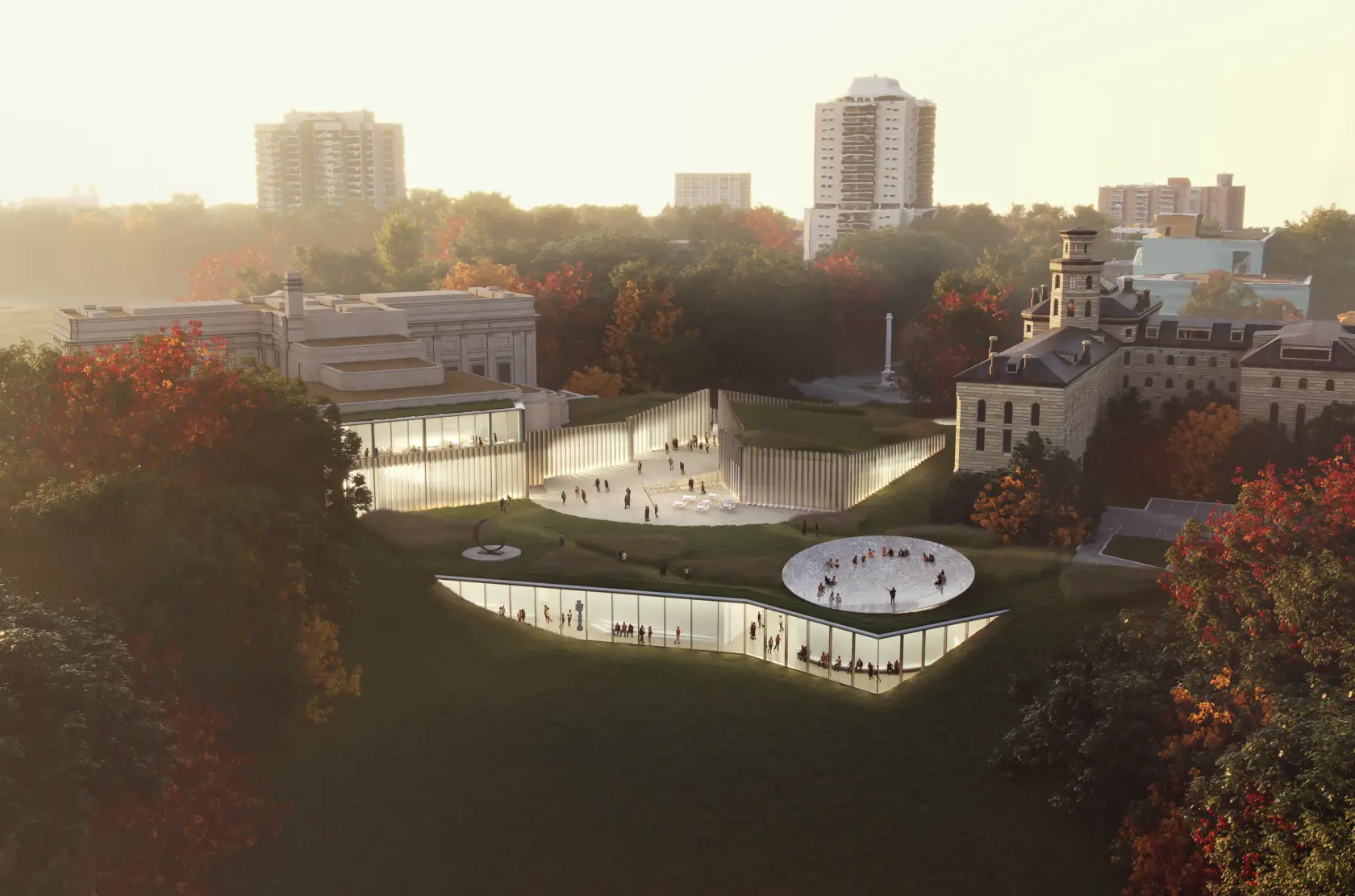
The circulation spaces and relaxation areas adjacent to the exhibition halls are connected to one of Riopelle’s main sources of inspiration: nature. Bathed in natural light, these spaces benefit from a remarkable panorama, conducive to reflection and contemplation.
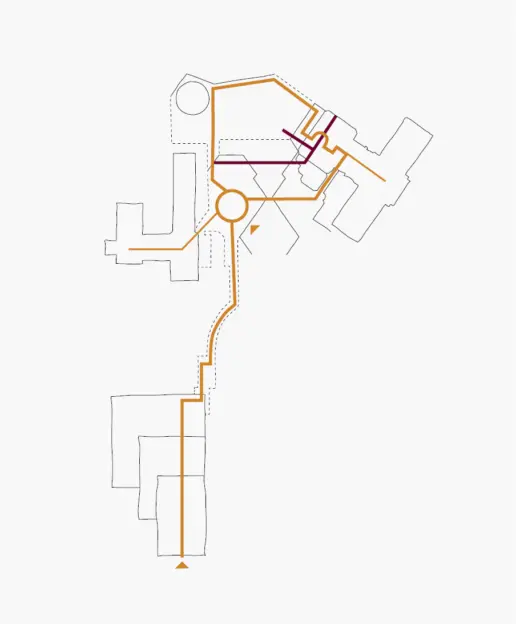
A new museum flow creating a coherent museum experience.
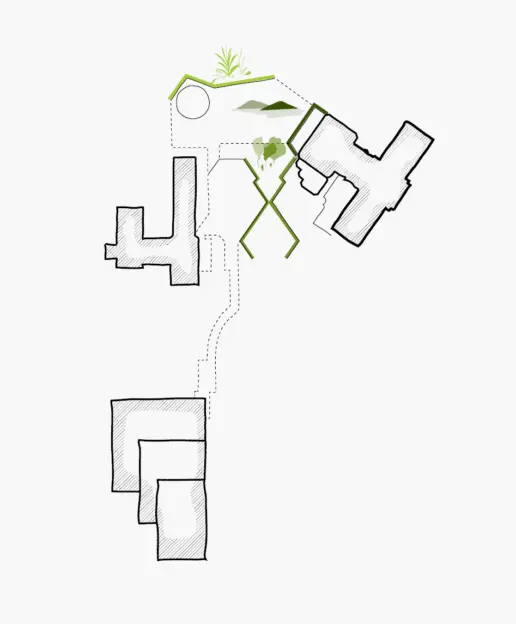
Distinct scales of openness to the landscape are created throughout the museum experience.
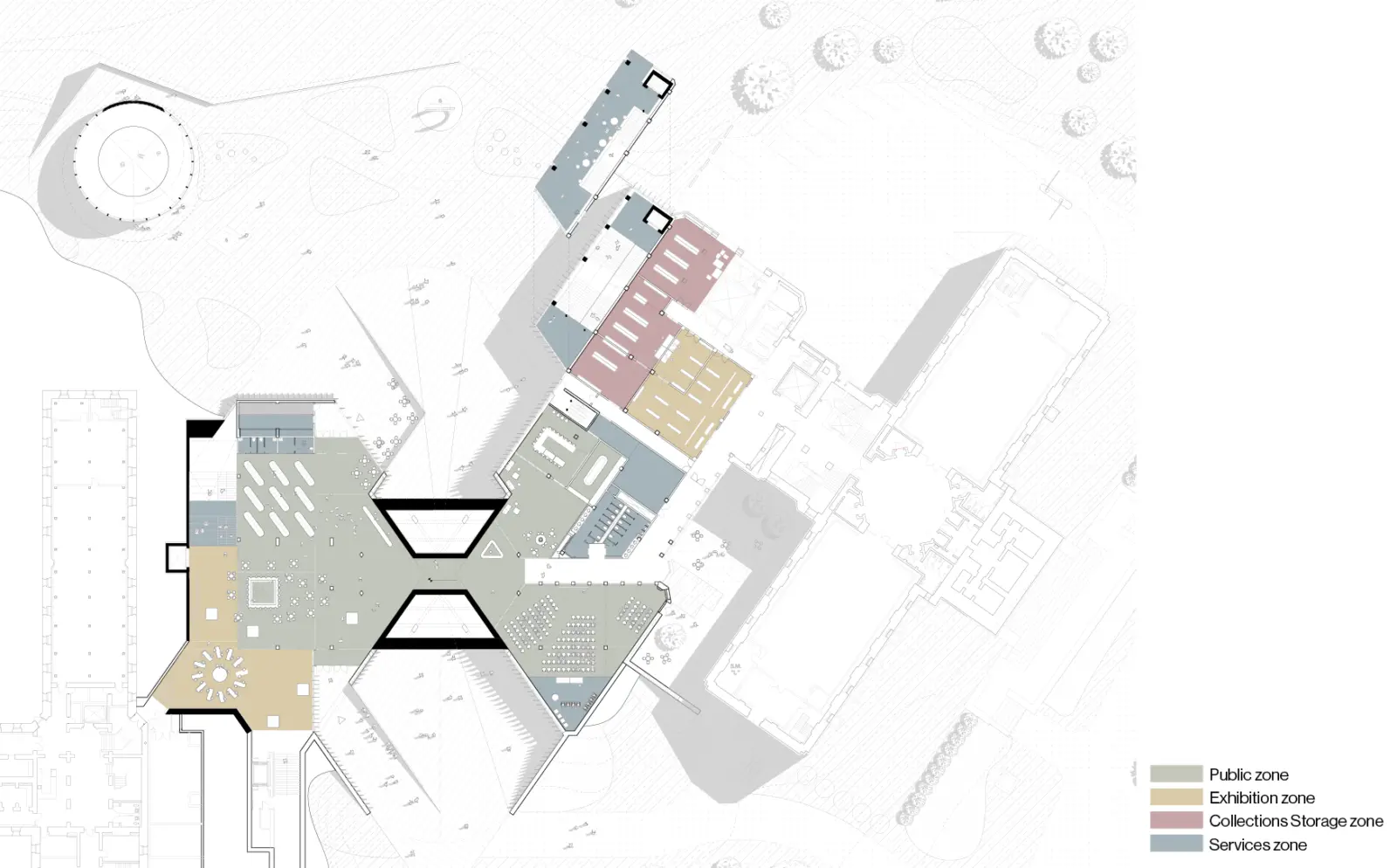
Plan niveau 0
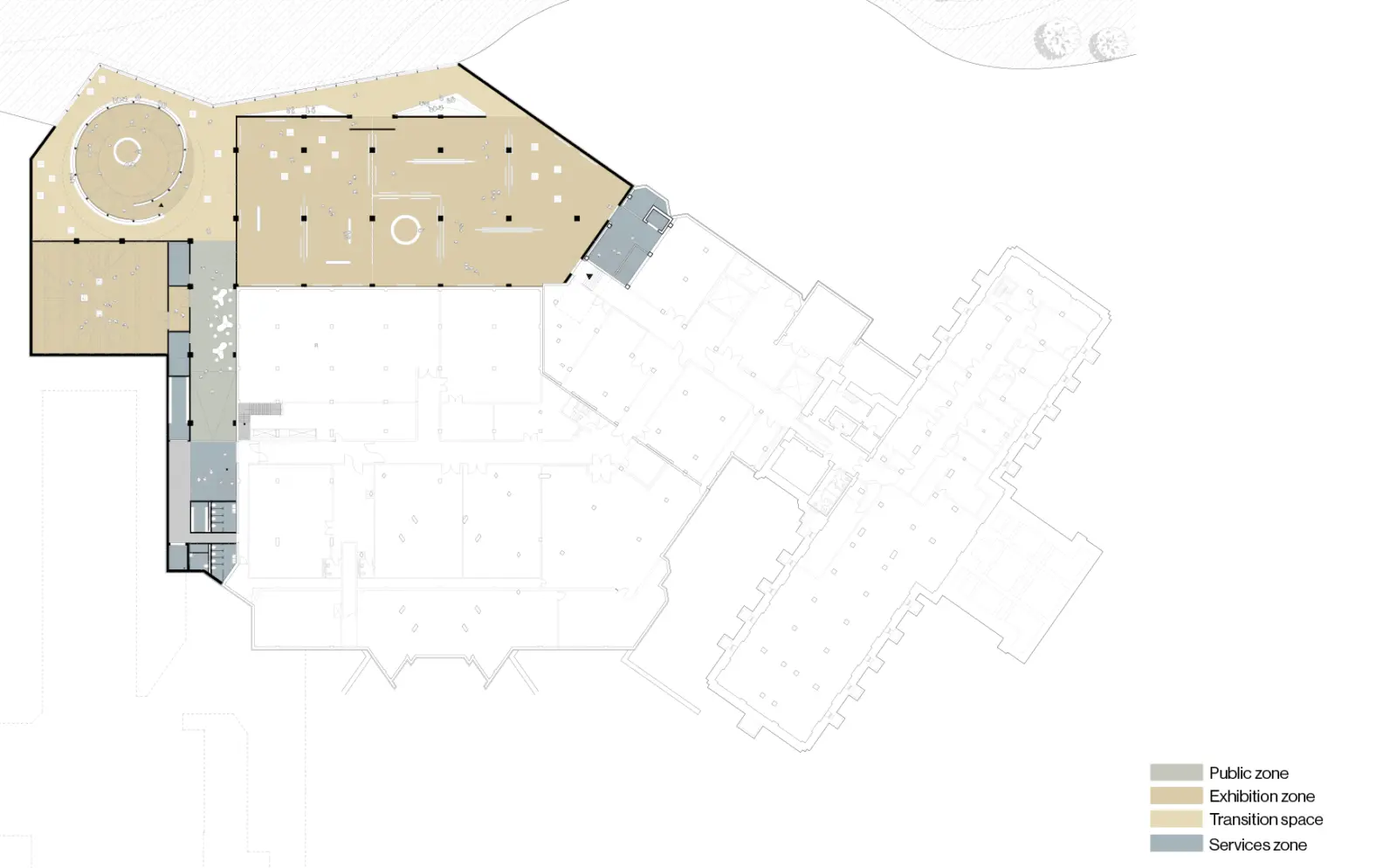
Plan niveau 1
The exhibition halls have been designed to accommodate the wide variety of Riopelle’s works. Three types of exhibition halls are imagined, differing in their temporality but also in their content. Each hall has a structural system that responds to its contents.
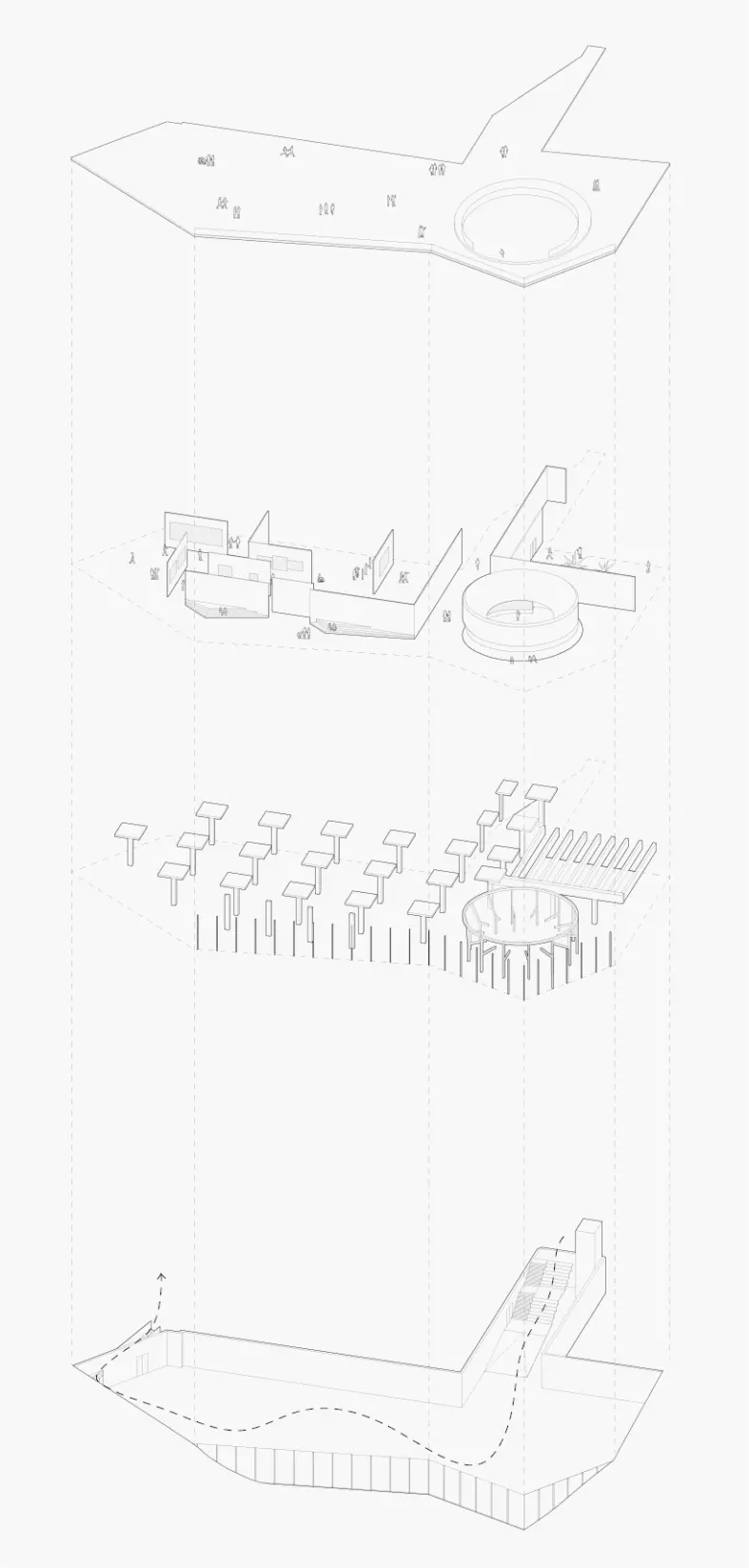
inclusive museum
For the design of the space dedicated to Riopelle’s most iconic painting, the 40 m long Hommage à Rosa Luxembourg, the starting point is the artwork itself. The exhibition space is arranged in a circle where the two ends are slightly offset like a spiral, in order to offer a fluid entry into the space, a progressive discovery of the artwork and an uninterrupted reading of the painting.
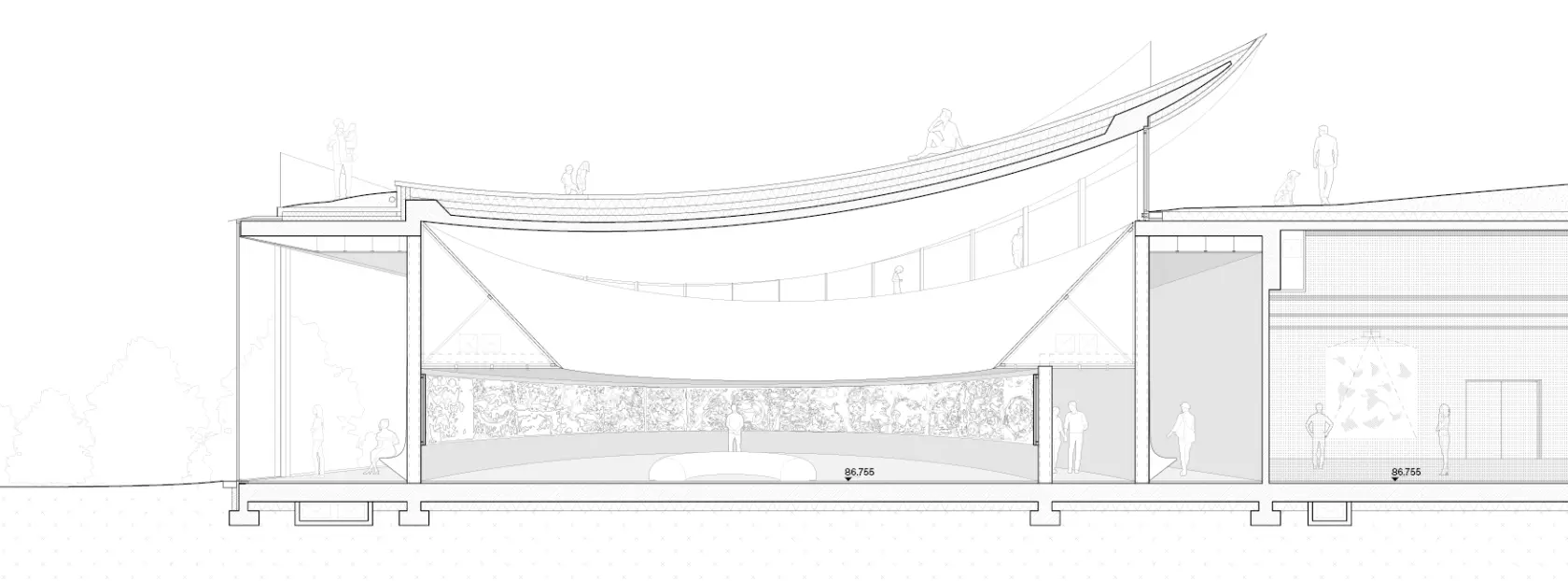
The Kiosque Riopelle takes the form of a slightly curved platform, a belvedere facing the landscape to the south and offering views to the Plains of Abraham and the St. Lawrence River.
This exhibition space is more than a mere container. It is not limited to the interior of the museum, but reveals itself on the outside, as its roof emerges from the ground into the Kiosque Riopelle. Placed in the landscape of the Plains of Abraham, the Kiosque Riopelle becomes a place of generosity, exchange, and events for the MNBAQ, the Plains of Abraham and the City of Québec.
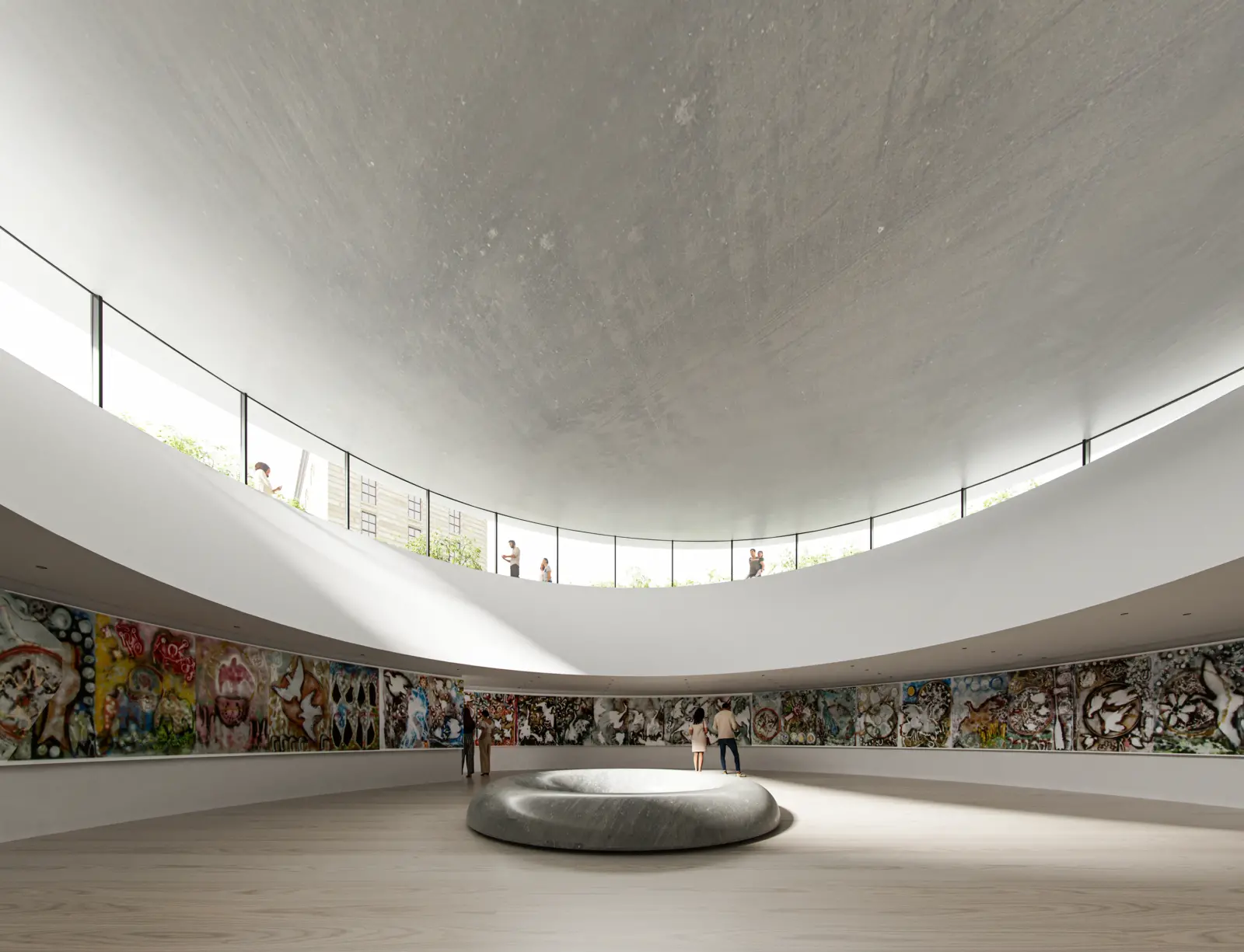
A glazed gap lets soft natural light from the north into the room. Passersby can view the exhibition hall below while strolling through the Plains of Abraham.
